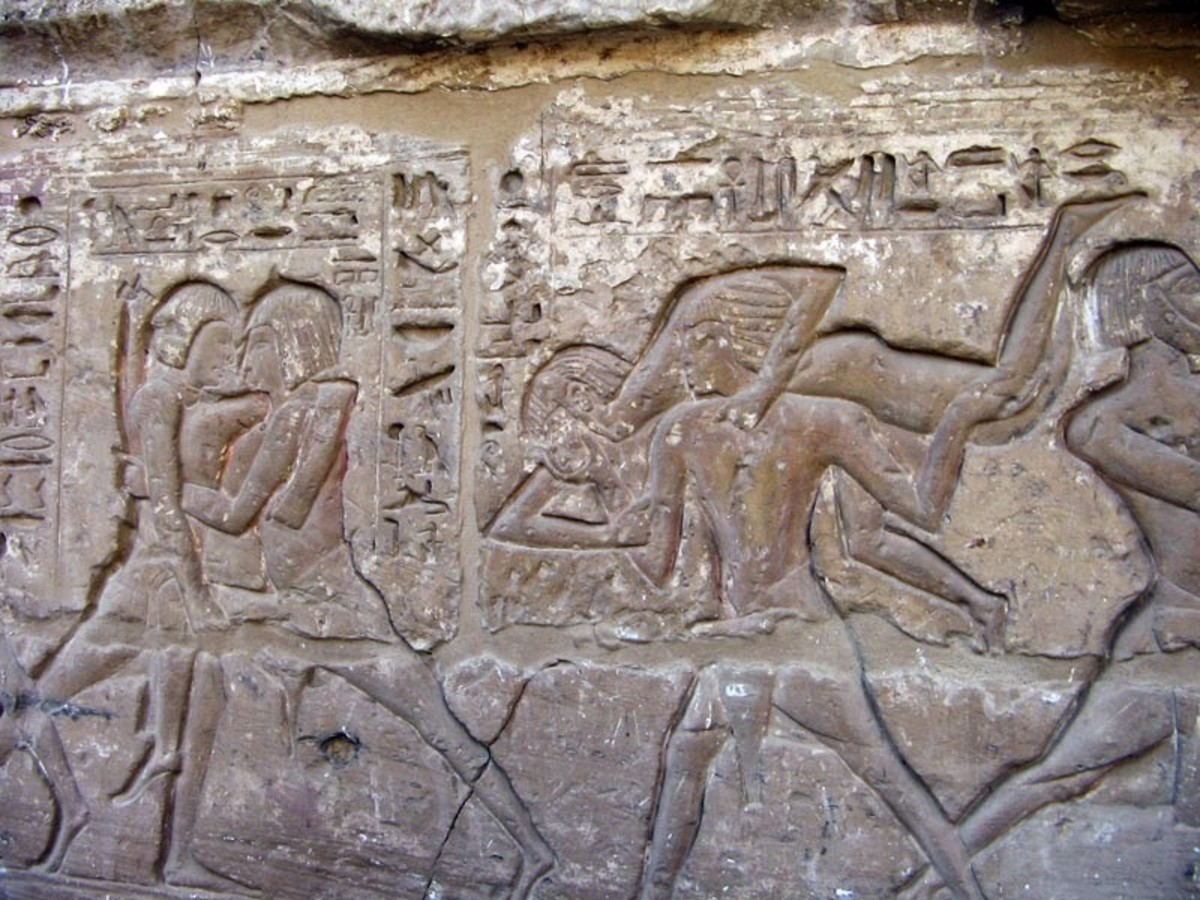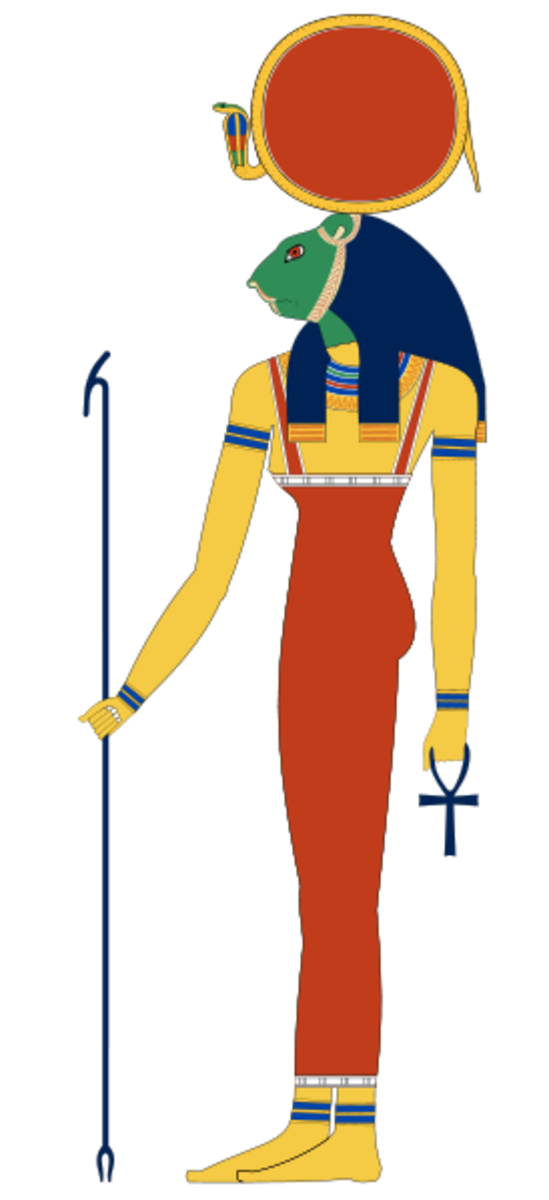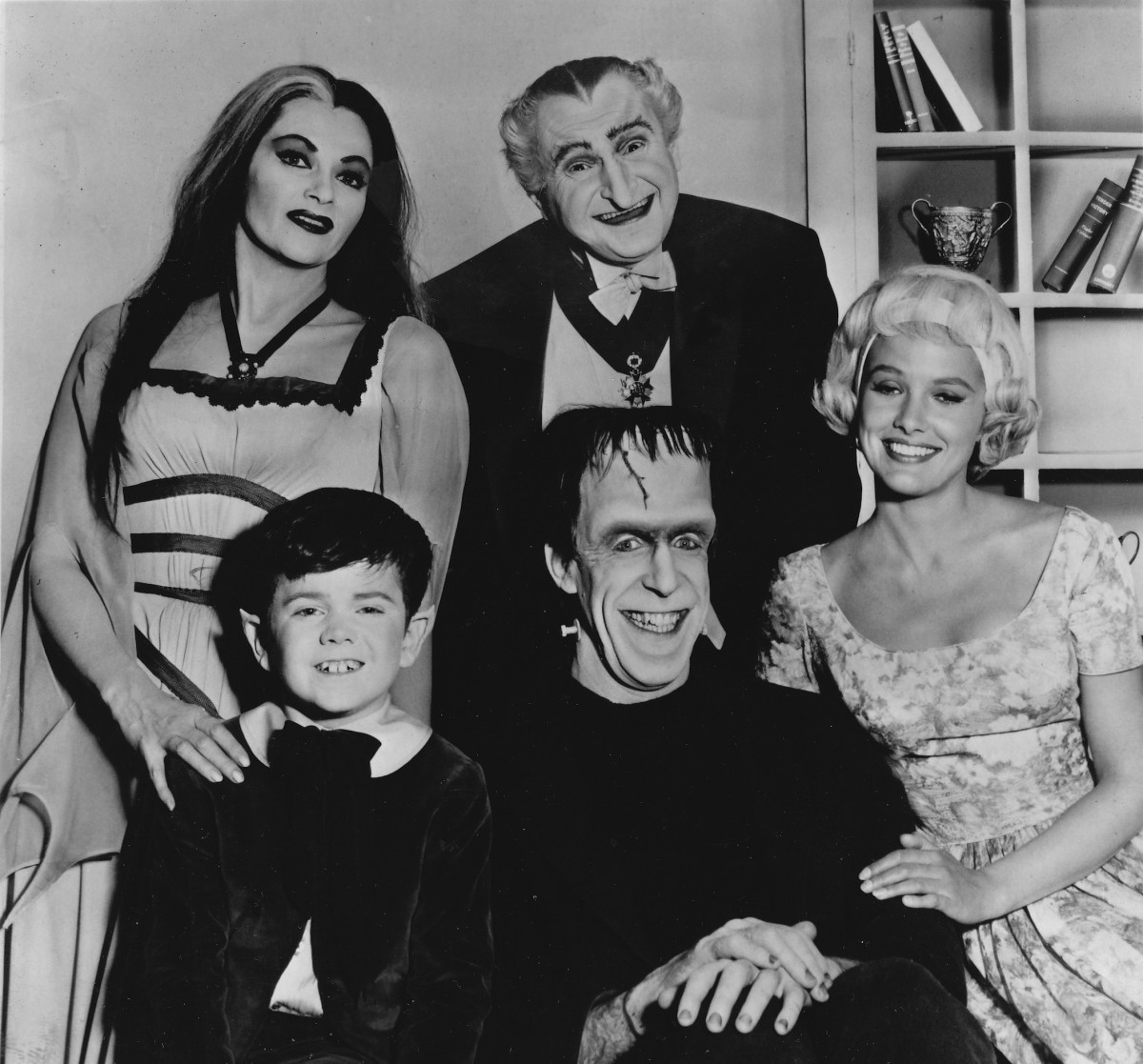Gods Of Stargate
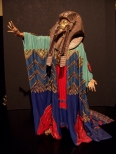
Mythology Comes To Life
Many of the "alien" characters in the Stargate franchise are named after the gods of Earth prior to Christianity. The Goa'uld hold power by claiming to be gods. They expect to be worshiped and obeyed. The Asguard while beneficent, still masquerade as Norse Gods. This lens will look at the deities as portrayed by Stargate and as worshiped here on Earth.
Note: I have not included characters who are only spoken of or are not gods themselves.
Important Stargate News
MGM Files For Bankruptcy:
Metro-Goldwyn-Mayer Inc. ("MGM") today announced that it and approximately 160 of its affiliates have filed Chapter 11 cases in the U.S. Bankruptcy Court for the Southern District of New York (the "Court") to seek confirmation of their "pre-packaged" plan of reorganization ("Plan"). MGM has sufficient cash on hand, and the consent of its lenders to use this cash, to fund normal business operations throughout the Chapter 11 process. MGM has filed "first-day" motions seeking immediate Court approval to continue paying its employees, vendors, participants, guilds and licensors in the ordinary course of business during the entire Chapter 11 process, for both pre-petition and post-petition obligations. MGM anticipates that the Plan will be confirmed by the Court in approximately 30 days.
As previously announced on October 29, 2010, MGM's secured lenders, voting in the Company's solicitation process, overwhelmingly approved the proposed plan of reorganization. After considering a range of strategic alternatives over the course of the last 15 months, MGM and its secured lenders determined this plan will allow the Company to emerge as a stable enterprise with new leadership at the helm to move MGM forward.
The Plan provides for the Company's secured lenders to exchange more than $4 billion in outstanding debt for most of the equity in MGM upon its emergence from Chapter 11.
Following the receipt of the requisite consents from its lenders for the Plan, the Company and certain significant consenting debt holders continued efforts to reach agreement with several affiliates of Carl Icahn, which directly or indirectly hold significant MGM debt, regarding the Icahn entities' support of the Plan. The Company, several Icahn entities, and certain significant consenting debt holders reached agreement regarding certain immaterial modifications to the transaction documents that are exhibits to the Plan. Subject to Bankruptcy Court approval, the transaction documents will be modified with respect to certain corporate governance provisions and to eliminate the contribution of assets by Cypress and Garoge, two affiliates of Gary Barber and Roger Birnbaum, and the receipt of stock in reorganized MGM by these entities. Based on these modifications, Mr. Icahn will support the Company's Plan.
Under the Plan, Messrs. Barber and Birnbaum, currently co-Chairman and Chief Executive Officer of Spyglass Entertainment, will serve as co-Chief Executive Officer of MGM Holdings Inc. and as co-Chairman and co-Chief Executive Officer of the primary operating subsidiary of MGM Holdings Inc. In addition, Messrs. Barber and Birnbaum will serve as members of the board of directors of MGM Holdings Inc., along with seven lender appointees, including several independent directors.
"For many months, we have been working with our lenders to explore the strategic options available to MGM to improve MGM's financial position and maximize the Company's value," said co-Chief Executive Officer Steve Cooper. "By sharply reducing MGM's debt load and providing access to new capital, the proposed plan of reorganization achieves these goals. Having received approval through our recently completed solicitation process, we are pleased that the lenders support MGM's approach. We now look forward to quickly emerging from Chapter 11."
Gary Barber and Roger Birnbaum said, "MGM is emerging from one of the most challenging periods of its storied history. We are honored and inspired at the prospect of leading one of Hollywood's most iconic studios into its next generation of unforgettable filmmaking, global television production and distribution, and aggressively pursuing, developing and exploiting new digital entertainment platforms."
Upon its exit from bankruptcy, MGM expects to raise approximately $500 million in financing to fund operations, including production of a new slate of films and television series. MGM will retain ownership of all of its assets.
The Company's restructuring counsel are Skadden, Arps, Slate, Meagher & Flom LLP and Klee, Tuchin, Bogdanoff & Stern LLP and its restructuring advisor is Zolfo Cooper. Press Release Nov. 3, 2010
Gateworld.net reports:
Most significantly for Stargate fans, MGM said that it plans to retain all of its assets during the procedures - and to raise around $500 million in new capital after emerging from Chapter 11, to fund operations "including production of a new slate of films and television series."
Stargate fans have been waiting in particular for a pair of DVD movies in the franchise, both of which are scripted and awaiting a green light. The end of MGM's crippling debt and a new influx of capital will be a big step forward - though not the only factor in when SG-1's Stargate: Revolution and Atlantis's Stargate: Extinction will be made. The studio also needs to be convinced that the films will actually turn a profit - whether in the DVD market or other means it could use to get them to fans.
Official Stargate Magazine to close:
The Official Stargate Magazine will cease publication after its September/October 2010 issue, its 36th, according to an announcement in the July/August issue of the magazine (see image at right). The glossy, color magazine is produced in London by the science fiction publisher Titan Magazines and has been released bi-monthly for nearly six years. The magazine started while Stargate: SG-1 and Stargate Atlantis were still on the air, and now will be outlived by Stargate Universe.
Its issues have been rich in photos, interviews, analyses, retrospectives, and news, although much of the latter has repeated what was already available on-line.
Titan Magazines is part of Titan Publishing, and its sister company Titan Books publishes the Stargate novels. There is no word from the company on why the magazine's run is ending. Given the current difficult market for print media and magazines in particular, the publication may be yet another victim of the economic times. Source
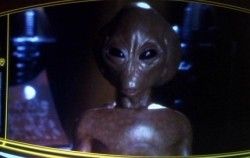
Aegir
Norse god of the sea
Asgard Commander of the Valhalla. The Valhalla attacked a Replicator ship as it exited hyperspace but was not able to stop some Replicators from landing on Orilla. Played by: Michael Shanks (voice)
Episodes: "New Order" (Parts 1 and 2)
Ãgir (Old Norse "sea") is a sea giant, god of sea and king of the sea creatures in Norse mythology. He is a personification of the power of the ocean. He is also known for hosting elaborate parties for the gods. Ãgir's servants are Fimafeng (killed by Loki) and Eldir. While many versions of myths portray Ãgir as a giant. In some texts he is referred to as something older than the giants, and his origins are not really explained.
In Snorri Sturluson's Skáldskaparmál, Ãgir is identified with Gymir and Hlér who lives on the isle of Hlésey.
In Lokasenna, he hosts a party for the gods where he provides the ale brewed in an enormous pot or cauldron provided by Thor. The story of Thor getting the pot for the brewing is told in Hymiskviða.

Amaterasu
Japanese Sun goddess
Goa'uld played by Kim Clavell
Episodes: "New Order" (Parts One and Two); Mentioned as being aligned with Yu in "It's Good To Be King"; Thought to have been killed by replicators in "Rekoning".
Amaterasu is in Japanese mythology a sun goddess and perhaps the most important Shinto deity. Her name, Amaterasu, means literally "(that which) illuminates Heaven". She was born from the left eye of Izanagi as he purified himself in a river and went on to become the ruler of the Higher Celestial Plain (Takamagahara).
She is also said to be directly linked in lineage to the Imperial Household of Japan and the Emperor, who are considered descendants of the kami themselves.
Story of Amaterasu
Amaterasu is described in the Kojiki as the sun goddess who was born from Izanagi, who was also accompanied by her siblings Susano'o, the storm deity, and Tsukuyomi, the moon deity. In the Kojiki, Amaterasu is described as the goddess from which all light emanates and is often referred to as the sun goddess because of her warmth and compassion for the people who worshipped her. Some other myths state that Amaterasu was born from water.
Most of her myths revolve around an incident where the goddess traps herself in a cave because of her brother's actions. For a while, everything amongst the three revered gods was peaceful and all of the world ran smoothly. One day, Susano'o, in a drunken rampage, trampled Amaterasu's rice fields, filled all of her irrigation ditches, and threw excrement into her palace and her shrines. The Omikami asked her brother to stop but he ignored her and even went so far as to throw the corpse of a skinned horse at her hand-maidens who were weaving at the time. The women were killed by the wood breaking apart and piercing their bodies (in the Kojiki it was their reproductive organs that were pierced).
Amaterasu was greatly angered and in protest she shut herself in the Heavenly Cave and sealed it shut with a giant rock. As a result, the world was consumed with darkness. Without her, everything began to wither and die. Countless Kami gathered in front of her cave and devised a way to lure her out. They all sat around the cave and set up a mirror across from the entrance. Ame-no-Uzume, the voluptuous goddess of merriment turned over a wash-tub and began a sensual dance, tapping the beat on the tub. She exposed her breasts and lifted her skirts as she danced. All of the gods made a great noise of yelling and cheering and laughing. Amaterasu peeked out to see what the noise was about. She asked the nearest god what was going on and he replied that there was a new goddess. When Amaterasu asked where she was, he pointed to the mirror.
The Omikami had never seen herself before and when she caught her reflection, she stared at the radiance of her own form. She was so surprised she said "omo-shiroi", which means both "white face," which the Omikami had, and "fascinating". When she was out of the way, Tajikara-O shut the rock behind her. Having lured her out of the cave, the gods convinced her to go back into the Celestial Plain and all life began to grow again and become strong in her light. Once back in the Celestial Plain, she made sure that she was ready for her brother's harsh actions again by having a bow and quiver at her side.
Later she sent her grandson Ninigi-no-Mikoto to pacify Japan: his great-grandson became the first emperor, Emperor Jimmu. He had a sacred sword (Kusanagi), jewel (Yasakani no magatama), and mirror (Yata no kagami) that became the Japanese imperial regalia.
Amaterasu is credited with inventing the cultivation of rice and wheat, use of silkworms, and weaving with a loom.
Kukai famously linked Amaterasu with Dainichi Nyorai, a central manifestation of the Buddha, whose name is literally "Great Sun Buddha". Thus Amaterasu is held as an divine Emanation of Buddha Vairocana.
Her most important shrine, the Grand Shrine of Ise, is in Ise in western Honshu. The shrine is torn down and rebuilt every 20 years. In that shrine she is represented as a mirror, one of the three Japanese imperial regalia. The Ise Shrine is said to be the home of Amaterasu. This shrine, however, is not open to the public.
She is celebrated every July 17 with street processions all over the country. Festivities on December 21, the winter solstice, celebrate her coming out of the cave.
Difference between Kojiki and Nihonshoki
In Kojiki and Nihonshoki, the goddess was described with slight difference. Mainly, the story of Kojiki is much better known.
First is the story of her birth. In Kojiki she was born after Izanagi failed to retrieve Izanami from Yomi. However, in Nihonshoki, Izanagi and Izanami, who was still alive, together decided to create the supreme deity to reign over the world, and gave birth to Amaterasu.
The episode of sending her grandson to Ashihara no Nakatsukuni (Japan) is also different in two myths. In Kojiki, Amaterasu commanded her son and other gods to pacify Japan. On the other hand, the main article of Nihonshoki records the myth that it was Takamimusubi-no-Kami who took control of the event and sent his maternal grandson Ninigi to Japan. The role of Amaterasu is ambiguous in the episode.
In both cases, Nihonshoki records similar version of Kojiki episode as "aru-fumi", the alternative episode.
The goddess and the Imperial family
In 1946, Emperor Showa was forced in the Humanity Declaration to renounce the conception of akitsumikami, divinity in human form, and claimed his relation to the people did not rely on such a mythological idea but on a historically developed family-like reliance.
Many authors, such as John W. Dower and Herbert Bix, consider however that by choosing the word akitsumikami instead of arahitogami, Hirohito didn't actually deny his divine descent from goddess Amaterasu Omikami.
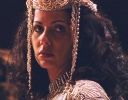
Amonet
Egyptian wind/protector goddess.
Goa'uld Daniel's wife Sha're is taken to be the mate of Apophis, played by Vaitiare Bandera
Episodes: "Children of the Gods" - Daniel's wife Sha're is taken to be Amonet's host; "Secrets" - Sha're gives birth to Shifu; "Forever in a Day" - Teal'c must shoot and kill Amonet (Sha're) to save Daniel's life.
In Egyptian mythology, Amunet (also spelled Amonet, Amaunet, Amentet, Amentit, Imentet, Imentit, and Ament) was a deity having several different characteristics during the long history of the pantheon of Ancient Egypt. Initially, Amunet was the female aspect of an abstract concept for air and invisibility. This deity was without gender, but divided between Amunet and Amun for female and male aspects. They were the two aspects of the primordial concept of air and invisibility in the Ogdoad cosmogony. This included eight deities worshipped as pairs in Hermopolis during what is called the Old Kingdom, the third through sixth dynasties, extending from 2,686 B.C. to 2,134 B.C.
Of the name for primordial air meaning, (one who) is hidden, the female aspect is Amunet and the male aspect is Amun. As the deity became more significant, eventually both aspects of the abstract concept were depicted as independent deities and identified as a pair.
As with all goddesses in the Ogdoad, Amunet was depicted either as an Egyptian cobra snake, or as a snake-headed woman. The male deities in the Ogdoad generally were depicted with the head of a frog.
Amaunet was said to be the mother who is father, implying that she was a creator who needed no male to procreate, reproducing asexually through parthenogenesis. The Egyptians thought that animals without sexual dimorphism, such as snakes, were all female.
As Amunet continued to be identified as the goddess of air, she sometimes was depicted as a winged goddess, or as a woman with a hawk, or ostrich feather, on her head.
She also is depicted with one of the hieroglyphs for the concept "West" on her head, on which the hawk or ostrich feather rests. Her name means "She of the West", as she is regarded as a personification of the direction West.
Euphemisms were used frequently to name deities in Ancient Egypt, to avoid divulging the sacred name of a deity to the uninitiated and to avoid unauthorized uses of the name. References to the west also relate to the place where the dead enter the underworld, relating to her role as a funerary goddess. The alternative spelling names Amentet or Imentit sometimes were used to refer to her role in the underworld, where the goddess provided a welcome to the newly dead. She was associated with an acacia tree that was said to be near Heliopolis, where bread was provided for the surrounding population during winter when their food supplies were limited.
When Amun became regarded with greater importance and his identity increasingly overlapped with that of Atum, Amaunet, as the female aspect, became increasingly identified with Iusaaset. Iusaaset was seen as the mother and grandmother of the deities.
By becoming identified as Iusaaset, Amunet was regarded as the mother of creation and she was seen as owning the tree from which all life emerged and returned, the tree of life, an acacia tree said to be located on the desert's edge to the west of Egypt at Heliopolis.
Its strength, hardiness, medical properties, and edibility resulted in the acacia tree being considered the tree of life. What was thought to be the oldest acacia tree in existence, the one which was situated close to, and north of, Heliopolis was said to be the tree of life. Its location was said to be the birthplace of all of the deities. Thus, as the mother, and grandmother, of the deities, Iusaaset was said to own this tree.
When Amunet later was displaced as Amun's consort by Mut, she retained her own individual characteristics. Amun went through many changes and became the patron deity of Thebes and rose to become the most important deity in that city and, for a while, the country.
While continuing to represent the air and the invisible, Amunet was said to have become associated with Iah, the moon, and was depicted in association with the moon on tombs, coffins, and sarcophaguses.

Anubis
Egyptian god of the underworld
Half-Assended Being played by David Palffy.
Episodes: "Revelations"; "Redemption Pt 1"; "Full Circle"; "Fallen"; "Homecoming"; "Evolution Pt 2"; "Lost City (Parts 1 & 2)"
Anubis is the Greek name for a jackal-headed god associated with mummification and the afterlife in Egyptian mythology. In the ancient Egyptian language, Anubis is known as Inpu, (variously spelled Anupu, Ienpw etc.) The oldest known mention of Anubis is in the Old Kingdom pyramid texts, where he is associated with the burial of the king. At this time, Anubis was the most important god of the Dead but he was replaced during the Middle Kingdom by Osiris.
Anubis takes various titles in connection with his funerary role, such as He who is upon his mountain, which underscores his importance as a protector of the deceased and their tombs, and the title He who is in the place of embalming, associating him with the process of mummification. Like many ancient Egyptian deities, Anubis assumes different roles in various contexts, and no public procession in Egypt would be conducted without an Anubis to march at the head.
Portrayal
Anubis was usually portrayed as a jackal-headed human, or in fully canine form wearing a ribbon and holding a flail in the crook of its arm. It was strongly associated with cemeteries in ancient Egypt, since it was a scavenger which threatened to uncover human bodies and eat their flesh The distinctive black color of Anubis "did not have to do with the jackal [per se] but with the color of rotting flesh and with the black soil of the Nile valley, symbolizing rebirth."
Anubis is depicted in funerary contexts where he is shown attending to the mummies of the deceased or sitting atop a tomb protecting it. In fact, during embalming, the "head embalmer" wore an Anubis costume. The critical weighing of the heart scene in Book of the Dead also show Anubis performing the measurement that determined the worthiness of the deceased to enter the realm of the dead (the underworld). New Kingdom tomb-seals also depict Anubis atop nine bows that symbolize his domination over the foes of Egypt.
Early connection to other gods
Originally, in the Ogdoad system, he was god of the underworld. He was said to have a wife, Anput (who was really just his female aspect, her name being his with an additional feminine suffix: the t), who was depicted exactly the same, though feminine. He is also listed to have taken to wife the feminine form of Neheb Kau, Nehebka, and Kebechet, the goddess of cold water and the purification of body organs due to be placed in canopic jars during mummification. Kebechet is also listed as his daughter in some places. His father was originally Ra in many papyrus records which were found in pyramids, (Anubis was the fourth son of Ra.) But in after ages, his father was said to be Osiris, as he was the god of the dead, and his mother was said to be Nephthys (one story claims that Nephthys tricked Osiris into fathering a child with her, after her husband Set refused to let her conceive).
Embalmer
Following the merging of the Ennead and Ogdoad belief systems, as a result of the identification of Atum with Ra, and their compatibility, Anubis became a lesser god in the underworld, giving way to the more popular Osiris during the Middle Kingdom. However, "Anubis was given a place in the family of gods as the...son of Osiris and Nephthys, and in this role he helped Isis mummify his dead father." Indeed, when the Legend of Osiris and Isis emerged, it was said that when Osiris had died, Osiris' organs were given to Anubis as a gift. With this connection, Anubis became the patron god of embalmers: during the funerary rites of mummification, illustrations from the Book of the Dead often show a priest wearing the jackal mask supporting the upright mummy.
Later perception
Since he was more associated with beliefs concerning the weighing of the heart than had Osiris, Anubis retained this aspect, and became considered more the gatekeeper and ruler of the underworld, the "Guardian of the veil" (of "death"). Consequently, he was said to protect souls as they journeyed there, and thus be the patron of lost souls (and consequently orphans). Anubis was frequently depicted in editions of the Book of Dead as performing the "Opening of the Mouth" ceremony on the mummy and statues of the deceased, as well as escorting the spirit of the deceased into the presence of Osiris in the underworld. Subsequently, the god is often shown weighing the heart of the deceased against the feather of truth (Ma'at) in the presence of Thoth (as scribe, writing down the recordings) and Osiris (as judge). Rather than god of death, he had become god of dying, and consequently funeral arrangements. It was as the god of death that his identity merged with that of Wepwawet, a similar jackal-headed god, associated with funerary practice, which had been worshiped in Lower Egypt, whereas Anubis' cult was centered in Upper Egypt.
However, as lesser of the two gods of the underworld, he gradually became considered the son of Osiris, but Osiris' wife, Isis, was not considered his mother, since she too inappropriately was associated with life. Instead, his mother became considered to be Nephthys, who had become strongly associated with funerary practice, indeed had in some ways become the personification of mourning, and was said to supply bandages to the deceased. Subsequently, this apparent infidelity of Osiris was explained in myth, in which it was said that a sexually frustrated Nephthys had disguised herself as Isis in order to appeal to her husband, Set, but he did not notice her as he was infertile. However, Isis' husband Osiris mistook Nephthys for his wife, which resulted in Anubis' birth. Other versions of the myth depict Set as the father, and it remains unclear as to whether Set was truly infertile or not.
Perception outside Egypt
In later times, during the Ptolemaic period, as their functions were similar, Anubis came to be identified as the Greek god Hermes, becoming Hermanubis. The centre of this cult was in uten-ha/Sa-ka/ Cynopolis, a place whose Greek name simply means "city of dogs". In Book XI of "The Golden Ass" by Apuleius, we find evidence that the worship of this god was maintained in Rome at least up to the 2nd century. Indeed, Hermanubis also appears in the alchemical and hermetical literature of the Middle Ages and the Renaissance.
Although the Greeks and Romans typically scorned Egypt's animal-headed gods as bizarre and primitive (they mockingly called Anubis the "Barker"), Anubis was sometimes associated with Sirius in heaven, and Cerberus in hell.

Apophis
Egyptian ruler of the night
Goa'uld played by Peter Williams.
Episodes: "Children of the Gods"; "The Nox"; "Cor-Ai"; "Within the Serpent's Grasp"; "The Serpent's Lair"; "Family"; "Secrets"; "Serpent's Song"; "Point of View"; Rules of Engagement"; "Jolinar's Memories"; "The Devil You Know"; "The Serpent's Venom"; "Absolute Power"; "Exodus"; "Enemies"; "Threshold"; "The Changeling"; "Moebius: Part 2"
In Egyptian mythology, Apep (also spelled Apepi, and Aapep, or Apophis in Greek) was an evil demon, the deification of darkness and chaos (isfet in Egyptian), and thus opponent of light and Ma'at (order/truth), whose existence was believed from the Middle Kingdom onwards.
Development
Apep formed part of the more complex cosmic system resulting from the identification of Ra as Atum, i.e. the creation of Atum-Ra, and the subsequent merging of the Ogdoad and Ennead systems. Consequently, since Atum-Ra, who was later referred to simply as Ra, was the solar deity, bringer of light, and thus the upholder of Ma'at, Apep was viewed as the greatest enemy of Ra, and thus was given the title Enemy of Ra.
As the personification of all that was evil, Apep was seen as a giant snake, crocodile, serpent, or in later years, in a few cases, as a dragon, leading to titles such as Serpent from the Nile, and Evil lizard. Some elaborations even said that he stretched 16 yards in length and had a head made of flint. It is to be noted that already on a Naqada I (ca. 4000 BC) C-ware dish (now in Cairo) a snake was painted combined with other desert and aquatic animals as a possible enemy of a solar god who is invisibly hunting in a big rowing vessel. Also, comparable hostile snakes as enemies of the sun god existed under other names (in the Pyramid Texts and Coffin Texts) already before the name Apep occurred. The etymology of his name ('pp) is perhaps to be sought in some west-semitic language where a word root "pp meaning 'to slither' existed. A verb root 'pp does at any rate not exist elsewhere in Ancient Egyptian. Apep's name much later came to be falsely connected etymologically in Egyptian with a different root meaning (he who was) spat out; the Romans referred to Apep by this translation of his name.
Apparently because of the spat out interpretation of the name Apep, it was said that he had been formed by Neith, who had been the deification of the primordial waters in the Ennead, from a length of spit she had spat at Nu, the deification of the primordial waters in the Ogdoad. Some subsequent commentators speculated that Apep must have been an earlier creator, and chief god, thus explaining why he had so much enmity towards Ra, but evidence for such a conclusion is slight.
After the end of the Middle Kingdom, the foreign Hyksos, now rulers over Egypt, chose Set, as their favorite deity, since he had been protector of Ra, and was associated with Lower Egypt, where their power base was. Consequently, because the foreign overlords were hated by nationalistic groups, Set became gradually demonised, and started being thought of as an evil god. Indeed, because of the extreme level of nationalism and xenophobia, Set eventually became thought of as the god of evil, and gradually took on all the characteristics of Apep. Consequently, Apep's identity was eventually entirely subsumed by that of Set.
Battles with Ra
Tales of Apep's battles against Ra were elaborated during the New Kingdom. Since nearly everyone can see that the sun is not attacked by a giant snake during the day, every day, storytellers said that Apep must lie just below the horizon. This appropriately made him a part of the underworld, which attacked the sun each night. In some stories Apep waited for Ra in a western mountain called Bakhu, where the sun set, and in others Apep lurked just before dawn, in the Tenth region of the Night. The wide range of Apep's possible location gained him the title World Encircler. It was thought that his terrifying roar would cause the underworld to rumble. Myths sometimes say that Apep was trapped there, because he had been the previous chief god and suffered a coup d'etat by Ra, or because he was evil and had been imprisoned.
In his battles, Apep was thought to use a magical gaze to hypnotise Ra and his entourage, attempting to devour them whilst choking the river on which they travelled through the underworld with his coils. Sometimes Apep had assistance from other demons, named Sek and Mot. Ra was assisted by a number of defenders who travelled with him, the most powerful being Set, who sat at the helm.
In a bid to explain natural phenomena it was said that occasionally Apep got the upper hand. The damage to order caused thunderstorms and earthquakes. Indeed: it was even thought that sometimes Apep actually managed to swallow Ra during the day, causing a solar eclipse, but since Ra's defenders quickly cut him free of Apep, the eclipse always ended within a few minutes. On the occasions when Apep was said to have been killed, he was able to return each night (since he lived in the world of the dead already). In Atenism it is Aten who kills the monster, obviously, since Aten is the only god in the belief system.
Worship
Apep was not so much worshipped, as worshipped against. His defeat each night, in favour of Ra, was thought to be ensured by the prayers of the Egyptian priests and worshipers at temples. The Egyptians practiced a number of rituals and superstitions that were thought to ward off Apep, and aid Ra to continue his journey across the sky.
In an annual rite, called the Banishing of Apep, priests would build an effigy of Apep that was thought to contain all of the evil and darkness in Egypt, and burn it to protect everyone from Apep's influence for another year, in a similar manner to modern rituals such as Zozobra.
The Egyptian priests even had a detailed guide to fighting Apep, referred to as The Books of Overthrowing Apep or (in Greek) the Book of Apophis. The chapters described a gradual process of dismemberment and disposal, and include:
Spitting Upon Apep
Defiling Apep with the Left Foot
Taking a Lance to Smite Apep
Fettering Apep
Taking a Knife to Smite Apep
Laying Fire Upon Apep
In addition to stories about Apep's defeats, this guide had instructions for making wax models, or small drawings, of the serpent, which would be spat on, mutilated and burnt, whilst reciting spells that would aid Ra. Fearing that even the image of Apep could give power to the demon, any rendering would always include another deity to subdue the monster, and/or knives already stabbed into him.
As Apep was thought to live in the underworld, he was sometimes thought of as an Eater-up of Souls. Thus the dead also needed protection, so they were sometimes buried with spells that could destroy Apep. The Book of the Dead frequently described occasions when Ra defeated Apep.

Athena
Greek goddess of wisdom
Goa'uld Enemy of Qe'tesh, devoted assistant to Ba'al, symbiote of Charlotte Mayfield, played by Sonya Salomaa
Episodes: "Ex Deus Machina"; "Memento Mori"
In Greek mythology, Athena (also called Athene; Latin: Minerva) is the shrewd companion of heroes and the goddess of heroic endeavour. She is the virgin patron of Athens, which built the Parthenon to worship her. In a temple at Phrixa in Elis, which was reportedly built by Clymenus, she was known as Cydonia.
Athena's cult seems to have existed from very early times as the patron of Athens and was so persistent that myths about her were rewritten often to adapt to cultural changes over the multiple eras of Ancient Greek traditions. The Greek philosopher, Plato (429-347 B.C.E.), identified her with the Libyan deity, Neith, who was the war-goddess and huntress deity of the Egyptians since the ancient predynastic period. She also would come to be known as the goddess of wisdom as philosophy became applied to cult in the later fifth century and Classical Greece. She was the patroness of weaving especially, and other crafts (Athena Ergane), and the more disciplined side of war, where she led the battle (Athena Promachos). The metalwork associated with the creation of weapons fell under her patronage. Athena's wisdom also includes the cunning intelligence (metis) of such figures as Odysseus.
She is attended by an owl, and is often accompanied by the goddess of victory, Nike, whom in established icons she offers upon her extended hand. Wearing a breastplate of either goatskin or snake skin called the Aegis, which in late myths is said to have been given to her by her father, Zeus although she was associated with this long before in other cultural contexts. She often is shown helmeted and with a shield bearing the Gorgon head, the hallmark of the early goddess cult in Greece that was given the highest position in the apex of the front facade of the Parthenon. Her shield was later said to be a votive gift of Perseus. A serpent often accompanies this goddess and frequently is depicted at the base of the staff of her lance. The sea and ships as well as horses and chariots are associated with her, but with less frequency.
Athena is an armed warrior goddess, and appears in Greek mythology as a helper of many heroes, including Odysseus, Jason, and Heracles. In Classical Greek myths she never had a consort or lover, and thus, often was known as Athena Parthenos ("Athena the virgin"), hence the name of her most famous temple, the Parthenon, on the Acropolis in Athens. In a remnant of archaic myth, she was the mother or adoptive mother of Erichthonius by the attempted rape by Hephaestus, which failed. Other variants relate that the serpent who accompanied Athena, also called Erichthonius, was born to Gaia, Earth, when the rape failed and the semen landed on Gaia, impregnating her, and that after the birth he was given to Athena by Gaia.
In her role as a protector of the city, Athena was worshiped throughout the Greek world as Athena Polias ("Athena of the city"). She had a special relationship with Athens, as is shown by the etymological connection of the names of the goddess and the city.
Birth
In The Greek Myths by Robert Graves (8.a, ff.) he notes early myths about the birth of Athena, in which she is described as a goddess from Libya whose worship came to the Greeks from Crete after arriving there as early as 4,000 BC. Graves also states that Hesiod (c. 700 BC) relates that Athena was a parthenogenous daughter of Metis, wisdom or knowledge, a Titan who ruled the fourth day and the planet Mercury. Other variants relate that although Metis was of an earlier generation of the Titans, Zeus became her consort when his cult gained dominance. In order to avoid a prophecy made when that change occurred, that any offspring of his union with Metis would be greater than he-Zeus is said to have swallowed Metis to prevent her from having offspring, but she already was pregnant with Athena. Metis gave birth to her and nurtured her inside Zeus until Athena burst forth from his forehead fully armed with weapons given by her mother.
In the late Classical Greek myths, Athena is most commonly described as the daughter of Zeus, born from his head after he swallowed her pregnant mother. The weapons for which she is most famous are the thunderbolt and the Aegis, which she and Zeus were said to share exclusively.
The Olympian version
After he swallowed her pregnant mother, Metis, Athena is "born" from Zeus' forehead as he grasps the clothing of Eileithyia on the right-black-figured amphora, 550-525 BC, Louvre. Although at Mycenaean Knossos Athena appears before Zeus does-in Linear B, as a-ta-na po-ti-ni-ja, "Mistress Athena" in the Classical Olympian pantheon, Athena was remade as the favorite daughter of Zeus, born fully armed from his forehead after he swallowed her mother, Metis. The story of her birth comes in several versions. In the one most commonly cited, Zeus lay with Metis, the goddess of crafty thought and wisdom, but he immediately feared the consequences. It had been prophesied that Metis would bear children more powerful than the sire, even Zeus himself. In order to forestall these dire consequences, after lying with Metis, Zeus "put her away inside his own belly;" he "swallowed her down all of a sudden," He was too late: Metis had already conceived a child.
Eventually it came to be that Zeus was in great pain; Prometheus, Hephaestus, Hermes, or Palaemon (depending on the sources examined) cleaved Zeus's head with the double-headed Minoan axe, the labrys. Athena leaped from Zeus's head, fully grown and armed-with a shout, "and pealed to the broad sky her clarion cry of war. And Ouranos trembled to hear, and Mother Gaia..." (Pindar, Seventh Olympian Ode). As noted above the Minonan culture of Crete was thought by Plato to have been a source from which the cult of Athena was introduced from Lybia during the dawn of Greek culture.
Classical myths thereafter noted that Hera was so annoyed at Zeus producing a child-apparently on his own-that she caused herself to conceive and bear Hephaestus by herself. After the appearance of this variant it becomes stated that Metis thereafter never bore any more children and, that Zeus persisted as supreme ruler of Mount Olympus. The Greek myths became static at this point, not changing[citation needed]before the ancient culture declined and its religion faded from practice.
Other origin tales
Fragments attributed by the Christian Eusebius of Caesarea to the semi-legendary Phoenician historian Sanchuniathon, which Eusebius thought had been written before the Trojan war, make Athena instead, the daughter of Cronus, a king of Byblos who is said to have visited 'the inhabitable world' and bequeathed Attica to Athena. Sanchuniathon's account would make Athena, as was Hera, the sister of Zeus, not his daughter.
Pallas Athena
The major competing tradition regarding Athena's parentage involves some of her more mysterious epithets: Pallas, (also Pallantias) and Tritogeneia (also Trito, Tritonis, Tritoneia, Tritogenes). A separate entity named Pallas is invoked - whether Athena's father, sister, foster-sister, companion, or opponent in battle. In every case, Athena kills Pallas, accidentally, and thereby gains the name for herself.
When Pallas is Athena's father the events, including her birth, are located near a body of water named Triton or Tritonis, the result of an etymology of Tritogeneia from Tritonis. When Pallas is Athena's sister or foster-sister, Athena's father or foster-father is Triton, the son and herald of Poseidon. But Athena may be called the daughter of Poseidon and a nymph named Tritonis, without involving Pallas. Likewise, Pallas may be Athena's father or opponent, without involving Triton. On this topic, Walter Burkert says "she is the Pallas of Athens, Pallas Athenaie, just as Hera of Argos is Here Argeie. For the Athenians, Burkert notes, Athena was simply "the Goddess", he thea, certainly an ancient title.
Athena Parthenos: Virgin Athena
Athena never had a consort or lover and thus, also was known as Athena Parthenos, "Virgin Athena." Her most famous temple, the Parthenon, on the Acropolis in Athens takes its name from this title. It was not merely an observation of her virginity, but a recognition of her role as enforcer of rules of sexual modesty and ritual mystery. This role is expressed in a number of stories about Athena. Marinus reports that when Christians removed the statue of the Goddess from the Parthenon, a beautiful woman appeared in a dream to Proclus, a devotee of Athena, and announced that the "Athenian Lady" wished to dwell with him.
Erichthonius
Hephaestus attempted to rape Athena, but she eluded him. His semen fell on the ground, and Erichthonius was born from the Earth, Gaia. Athena then raised the baby as a foster mother.
Athena put the infant Erichthonius in a small box (cista) which she entrusted to the care of three sisters, Herse, Pandrosus, and Aglaulus of Athens. The goddess didn't tell them what the box contained, but warned them not to open it until she returned. One or two sisters opened the cista to reveal Erichthonius, in the form (or embrace) of a serpent. The serpent, or insanity induced by the sight, drove Herse and Pandrosus to throw themselves off the Acropolis. Jane Harrison (Prolegomena) finds this to be a simple cautionary tale directed at young girls carrying the cista in the Thesmophoria rituals, to discourage them from opening it outside the proper context.

Ba'al
Canaanite Sun god of fertility and protection
Goa'uld played by Cliff Simon
Episodes:"Summit": Last Stand"; "Abyss"; "Homecoming"; "Zero Hour"; "Reckoning: Part 1 & 2"; "Threads"; "Ex Deus Machina"; "Stronghold"; "Off the Grid"; "Insiders"; "The Quest: Parts 1 & 2"; "Dominion"
Ba'al (ordinarily spelled Baal in English) is a Northwest Semitic title and honorific meaning "master" or "lord" that is used for various gods who were patrons of cities in the Levant, cognate to Assyrian Belu. A Baalist means a worshipper of Baal.
"Ba'al" can refer to any god and even to human officials; in some texts it is used as a substitute for Hadad, a god of the rain, thunder, fertility and agriculture, and the lord of Heaven. Since only priests were allowed to utter his divine name Hadad, Ba'al was used commonly. Nevertheless, few if any Biblical uses of "Ba'al" refer to Hadad, the lord over the assembly of gods on the holy mount of Heaven, but rather refer to any number of local spirit-deities worshipped as cult images, each called ba'al and regarded by the writers of the Hebrew Bible in that context as a false god.
Deities called Ba'al and Ba'alath
Ba'al with raised arm, 14th-12th century BC, found at Ras Shamra (ancient Ugarit), LouvreBecause more than one god bore the title "Ba'al" and more than one goddess bore the title "Ba'alat" or "Ba``alah," only the context of a text can indicate which Ba'al 'lord' or Ba'alath 'Lady' a particular inscription or text is speaking of.
Though the god Hadad (or Adad) was especially likely to be called Ba'al, Hadad was far from the only god to have that title. The Ugaritic texts (mainly preserved in the Ba'al cycle) place the dwelling of Baal on Mount Saphon, so references to Baal Zephon in the Tanach and in inscriptions and tablets referring to the Baal of Mount Saphon may indicate the storm-god Hadad. It is said[citation needed] that Ba'al Pe'or, the lord of Mount Pe'or, whom Israelites were forbidden from worshipping (Numbers 25:3) was also Hadad. In the Canaanite pantheon, Hadad was the son of El, who had once been the primary god of the Canaanite pantheon.
Baal of Tyre
Melqart is the son of El in the Phoenician triad of worship, He was the god of Tyre and was often called the Ba'al of Tyre. 1 Kings 16:31 relates that Ahab, king of Israel, married Jezebel, daughter of Ethba'al, king of the Sidonians, and then served habba'al ('the Ba'al'.) The cult of this god was prominent in Israel until the reign of Jehu, who put an end to it (2 Kings 10:26):
And they brought out the pillars (massebahs) of the house of the Ba'al and burned them. And they pulled down the pillar (massebah) of the Ba'al and pulled down the house of the Ba'al and turned it into a latrine until this day.
Some scholars claim it is uncertain whether "Ba'al" 'the Lord' refers to Melqart in Kings 10:26, they point out that Hadad was also worshipped in Tyre. However this position negates the real possibility that Hadad and Melqart are one in the same god, only having different names because of different languages and cultures. Hadad being Canaanite and Melqart being Phoenician. Both Hadad and Melqart are professed to be the son of El both carrying the same secondary position in the pantheons of each culture. This fact reveals them to be the same deity with different names due to different languages. A contemporary example of this would be God in English and Dios in Spanish.
Josephus (Antiquities 8.13.1) states clearly that Jezebel "built a temple to the god of the Tyrians, which they call Belus" which certainly refers to the Baal of Tyre, or Melqart.
Ahab son of Omri did more evil in the eyes of the Lord than any of those before him. He not only considered it trivial to commit the sins of Jeroboam son of Nebat, but he also married Jezebel daughter of Ethbaal king of the Sidonians, and began to serve Baal and worship him. He set up an altar for Baal in the temple of Baal that he built in Samaria. Ahab also made an Asherah [pole] and did more to provoke the Lord, the God of Israel, to anger than did all the kings of Israel before him.
In any case, King Ahab, despite supporting the cult of this Ba'al, had a semblance of worship to Yahweh (1 Kings 16-22). Ahab still consulted Yahweh's prophets and cherished Yahweh's protection when he named his sons Ahaziah ("Yahweh holds") and Jehoram ("Yahweh is high.")
Ba'al of Carthage
The worship of Ba'al Hammon flourished in the Phoenician colony of Carthage. Ba'al Hammon was the supreme god of the Carthaginians. He is generally identified by modern scholars either with the Northwest Semitic god El or with Dagon, and generally identified by the Greeks, by interpretatio Graeca with Greek Cronus and similarly by the Romans with Saturn.
The meaning of Hammon or Hamon is unclear. In the 19th century when Ernest Renan excavated the ruins of Hammon, the modern Umm al-'Awamid between Tyre and Acre, he found two Phoenician inscriptions dedicated to El-Hammon. Since El was normally identified with Cronus and Ba'al Hammon was also identified with Cronus, it seemed possible they could be equated. Frank Moore Cross argued for a connection to Khamon, the Ugaritic and Akkadian name for Mount Amanus, the great mountain separating Syria from Cilicia based on the occurrence of an Ugaritic description of El as the one of the Mountain Haman.
Classical sources relate how the Carthaginians burned their children as offerings to Ba'al Hammon. See Moloch for a discussion of these traditions and conflicting thoughts on the matter. Such a devouring of children fits well with the Greek traditions of Cronus. Ritual prostitution as a form of worship also may have been done, especially when the Carthaginians began to recognize Ba'al as a fertility god.
Scholars tend to see Ba'al Hammon as more or less identical with the god El, who was also generally identified with Cronus and Saturn. However, Yigal Yadin thought him to be a moon god. Edward Lipinski identifies him with the god Dagon in his Dictionnaire de la civilisation phenicienne et punique (1992: ISBN 2-503-50033-1). Inscriptions about Punic deities tend to be rather uninformative.
In Carthage and North Africa Ba'al Hammon was especially associated with the ram and was worshiped also as Ba'al Qarnaim ("Lord of Two Horns") in an open-air sanctuary at Jebel Bu Kornein ("the two-horned hill") across the bay from Carthage.
Ba'al Hammon's female cult partner was Tanit. He was probably not ever identified with Ba'al Melqart, although one finds this equation in older scholarship.
Ba'alat Gebal ("Lady of Byblos") appears to have been generally identified with 'Ashtart, although Sanchuniathon distinguishes the two.
Priests of Ba'al
The Priests of Ba'al are mentioned in the Hebrew Bible numerous times, including a confrontation with the Prophet Elijah (1 Kings 18:21-40), the burning of incense symbolic of prayer (2 Kings 23:5), and rituals followed by priests adorned in special vestments (2 Kings 10:22) offering sacrifices similar to those given to honor Yahweh. The confrontation with the Prophet Elijah is also mentioned in the Qur'an (37:123-125)
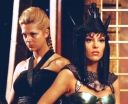
Bastet
Egyptian Cat goddess
Goa'uld reported as killed by Ba'al, played by Natasha Khadr
Episodes: "Last Stand"; "Summit"
In Egyptian mythology, Bast (also spelled Ubasti, and later Bastet) is an ancient solar and war goddess, worshipped at least since the Second Dynasty. In the late dynasties, the priests of Amun began to call her Bastet, a repetitive and diminutive form after her role in the pantheon became diminished as Sekhmet, a similar lioness war deity, became more dominant in the unified culture of Lower and Upper Egypt. In the Middle Kingdom, the cat appeared as Bastet’s sacred animal and after the New Kingdom she was depicted with a woman with a cat’s head carrying a sacred rattle and a box or basket.
Bast or Bastet was the cat goddess and local deity of the town of Bubastis "Tell or Per-Bast in Egyptian, where her cult was centered. Bubastis was named after her. Originally she was viewed as the protector goddess of Lower Egypt, and consequently depicted as a fierce lioness. Indeed, her name means (female) devourer. As protector, she was seen as defender of the pharaoh, and consequently of the later chief male deity, Ra, who was a solar deity also, gaining her the titles Lady of Flame and Eye of Ra.
The goddess Bast was sometimes depicted holding a ceremonial sistrum in one hand and an aegis in the other – the aegis usually resembling a collar or gorget embellished with a lioness head.
Bast was a goddess of the sun throughout most of Ancient Egyptian history, but later was changed to a goddess of the moon by Greeks occupying Ancient Egypt toward the end of its civilization. In Greek mythology, Bast is also known as Aelurus.
History and connection to other gods
Due to the threat to the food supply that could be caused by simple vermin such as mice and rats, and their ability to fight and kill snakes, especially cobras, cats in Egypt were revered highly, sometimes being given golden jewelry to wear and being allowed to eat from the same plates as their owners. Consequently, later as the main cat (rather than lioness) deity, Bastet was strongly revered as the patron of cats, and thus it was in the temple at Per-Bast that dead (and mummified) cats were brought for burial. More than 300,000 mummified cats were discovered when Bast's temple at Per-Bast was excavated. Egyptians believe, when a cat in the family dies, to show respect, they display the body outside of the home.
As a cat or lioness war goddess, and protector of the lands, when, during the New Kingdom, the fierce lion god Maahes of Nubia became part of Egyptian mythology, she was identified, in the Lower Kingdom, as his mother. This paralleled the identification of the fierce lioness war goddess Sekhmet, as his mother in the Upper Kingdom.
As divine mother, and more especially as protector, for Lower Egypt, she became strongly associated with Wadjet, the patron goddess of Lower Egypt, eventually becoming Wadjet-Bast, paralleling the similar pair of patron (Nekhbet) and lioness protector (Sekhmet) for Upper Egypt.
Later prepiation
Later scribes sometimes renamed her Bastet, a variation on Bast consisting of an additional feminine suffix to the one already present, thought to have been added to emphasize pronunciation; but perhaps it is a diminutive name applied as she receded in the ascendancy of Sekhmet in the Egyptian pantheon. Since Bastet literally meant, (female) of the ointment jar, Bast gradually became regarded as the goddess of perfumes, earning the title perfumed protector. In connection with this, when Anubis became the god of embalming, Bast, as goddess of ointment, came to be regarded as his wife. The association of Bastet as mother of Anubis, was broken years later when Anubis became Nephthys' son.
This gentler characteristic, of Bastet as goddess of perfumes, together with Lower Egypt's loss in the wars between Upper and Lower Egypt, led to a decrease in her ferocity. Thus, by the Middle Kingdom she came to be regarded as a domestic cat rather than a lioness. Occasionally, however, she was depicted holding a lioness mask, hinting at potential ferocity. Because domestic cats tend to be tender and protective of their offspring, Bast was also regarded as a good mother, and she was sometimes depicted with numerous kittens. Consequently, a woman who wanted children sometimes wore an amulet showing the goddess with kittens, the number of which indicated her own desired number of children. Eventually, her position as patron and protector of Lower Egypt led to her being identified with the more substantial goddess Mut, whose cult had risen to power with that of Amun, and eventually being syncretized with her as Mut-Wadjet-Bast. Shortly after, Mut also absorbed the identities of the Sekhmet-Nekhbet pairing as well.
This merging of identities of similar goddesses has led to considerable confusion, leading to some attributing to Bastet the title Mistress of the Sistrum (more properly belonging to Hathor, who had become thought of as an aspect of the later emerging Isis, as had Mut), and the Greek idea of her as a lunar goddess (more properly an attribute of Mut) rather than the solar deity she was. Indeed, much of this confusion occurred with subsequent generations; the identities slowly merged among the Greeks during their occupation of Egypt, who sometimes named her Ailuros (Greek for cat), thinking of Bastet as a version of Artemis, their own moon goddess.[2] Thus, to fit their own cosmology, to the Greeks Bastet was thought of as the sister of Horus, whom they identified as Apollo (Artemis' brother), and consequently, the daughter of the later emerging deities, Isis and Osiris.
Gods Of The Egyptians - Books for further reading





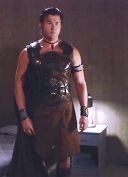
Camulus
Celtic god of war
Goa'uld ,enemy of Ba'al; Presumed killed in Zero Hour, played by Steve Bacic
Episodes: - "New Order (Parts 1 & 2)"; "Zero Hour"
In Celtic mythology, Camulus or Camulos was the god of war of the Remi, a Celtic tribe, who lived in the area of today's Belgium. Traces of his cult are also found in Britain. The town Camulodunum (now Colchester) in Essex, was named after him; it has been claimed that this was the basis for the legendary city Camelot. The Romans identified Camulus with Mars, their god of war.
Cunobelinus (Shakespeare's Cymbeline), chief of the Catuvellauni and called "Britannorum rex" by Roman historian Suetonius, made Camulodunum his capital after defeating the local Trinobantes. He established a mint there and coins bearing his head are still found occasionally in the area. After his death about 42 AD, his sons fell out with Rome and gave the emperor Claudius the excuse to try to place Britain under Roman rule.
Cronus
Greek god of fate and the harvest
Goa'uld killed Teal'c's father and was eventually killed by Teal'c. Played by Ron Halder
Episodes: "Fair Game"; "Crossroads"; "Double Jeopardy"
Cronus, also called Cronos or Kronos or Kronus, was the leader and the youngest of the first generation of Titans, divine descendants of Gaia, the earth, and Ouranos, the sky. He overthrew his father and ruled during the mythological Golden Age, until he was overthrown by his own sons, Zeus, Hades, and Poseidon, and imprisoned in Tartarus or sent to rule the paradise of the Elysian Fields.
As a result of his association and virtuous Golden Age, Cronus was worshipped as a harvest deity, overseeing crops such as grains, nature, agriculture, and the progression of time in relation to humans in general. He was usually depicted with a sickle, which he used to harvest crops and which was also the weapon he used to castrate and depose Ouranos. In Athens, on the twelfth day of every month (Hekatombaion), a festival called Kronia was held in honor of Cronus to celebrate the harvest. Cronus was also identified in classical antiquity with the Roman deity Saturn.
The etymology of the name is obscure. It may be related to "horned", suggesting a possible connection with the ancient Indian demon Kroni or the Levantine deity El. In the Alexandrian and Renaissance periods there was some confusion with the word Chronos, meaning time.
In Greek mythology and early mythsm
In ancient Greek myths, Cronus envied the power of his father, the ruler of the universe, Ouranos. Ouranos drew the enmity of Cronus' mother, Gaia, when he hid the gigantic youngest children of Gaia, the hundred-armed Hecatonchires and one-eyed Cyclops, in Tartarus, so that they would not see the light. Gaia created a great adamant sickle and gathered together Cronus and his brothers to persuade them to kill Ouranos. Only Cronus was willing to do the deed, so Gaia gave him the sickle and placed him in ambush. When Ouranos met with Gaia, Cronus attacked him with the sickle by cutting off his genitals, castrating him and casting the severed member into the sea. From the blood (or, by a few accounts, semen) that spilled out from Ouranos and fell upon the earth, the Gigantes, Erinyes, and Meliae were produced. From the member that was cast into the sea, Aphrodite later emerged. For this, Ouranos threatened vengeance and called his sons titenes (according to Hesiod meaning "straining ones," the source of the word "titan", but this etymology is disputed) for overstepping their boundaries and daring to commit such an act.
In an alternate version of this myth, a more benevolent Cronus overthrew the wicked serpentine Titan Ophion. In doing so, he released the world from bondage and for a time ruled it justly.
After dispatching Ouranos, Cronus re-imprisoned the Hecatonchires, the Gigantes, and the Cyclopes and set the dragon Campe to guard them. He and Rhea took the throne of the world as king and queen. This period of Cronus' rule was called the Golden Age, as the people of the time had no need for laws or rules; everyone did the right thing, and immorality was absent.
Cronus learned from Gaia and Ouranos that he was destined to be overcome by his own son, just as he had overthrown his father. As a result, although he sired the gods Demeter, Hera, Hades, Hestia, and Poseidon by Rhea, he swallowed them all as soon as they were born to preempt the prophecy. When the sixth child, Zeus, was born Rhea sought Gaia to devise a plan to save them and to eventually get retribution on Cronus for his acts against his father and children. Rhea secretly gave birth to Zeus in Crete, and handed Cronus a stone wrapped in swaddling clothes, also known as the Omphalos Stone, which he promptly swallowed, thinking that it was his son.
Rhea kept Zeus hidden in a cave on Mount Ida, Crete. According to some versions of the story, he was then raised by a goat named Amalthea, while a company of Kouretes, armored male dancers, shouted and clapped their hands to make enough noise to mask the baby's cries from Cronus. Other versions of the myth have Zeus raised by the nymph Adamanthea, who hid Zeus by dangling him by a rope from a tree so that he was suspended between the earth, the sea, and the sky, all of which were ruled by his father, Cronus. Still other versions of the tale say that Zeus was raised by his grandmother, Gaia.
Once he had grown up, Zeus used a poison given to him by Gaia to force Cronus (Kronos or Kronus) to disgorge the contents of his stomach in reverse order: first the stone, which was set down at Pytho under the glens of Mount Parnassus to be a sign to mortal men, then the goat, and then his two brothers and three sisters. In other versions of the tale, Metis gave Cronus an emetic to force him to disgorge the children, or Zeus cut Cronus' stomach open. After freeing his siblings, Zeus released the Gigantes, the Hecatonchires, and the Cyclopes, who forged for him his thunderbolts. In a vast war called the Titanomachy, Zeus and his brothers and sisters, with the help of the Gigantes, Hecatonchires, and Cyclopes, overthrew Cronus and the other Titans. Afterwards, many of the Titans were confined in Tartarus. Some Titans were not banished to Tartarus. Cronus, Epimetheus, Menoetius, Oceanus and Prometheus are examples of Titans who were not imprisoned in Tartarus following the Titanomachy. Gaia bore the monster Typhon to claim revenge for the imprisoned Titans, though Zeus was victorious. Accounts of the fate of Cronus after the Titanomachy differ. In Homeric and other texts he is imprisoned with the other Titans in Tartarus. In Orphic poems, he is imprisoned for eternity in the cave of Nyx. Pindar describes his release from Tartarus, where he is made King of Elysium by Zeus.
Other children Cronus is reputed to have fathered include Chiron, by Philyra.
Cronos is again mentioned in the Sibylline Oracles, particularly book three, which makes Cronos, 'Titan' and Iapetus, the three sons of Ouranos and Gaia, each to receive a third division of the Earth, and Cronos is made king over all. After the death of Ouranos, Titan's sons attempt to destroy Cronos' and Rhea's male offspring as soon as they are born, but at Dodona, Rhea secretly bears her sons Zeus, Poseidon and Hades and sends them to Phrygia to be raised in the care of three Cretans. Upon learning this, sixty of Titan's men then imprison Cronos and Rhea, causing the sons of Cronos to declare and fight the first of all wars against them. This account mentions nothing about Cronos either killing his father or attempting to kill any of his children.

Freyr
Asgard. Member of the High Council and protector of the planet K'Tau.
Episodes: "Red Sky", "Fail Safe", "Revelations"
Freyr (sometimes anglicized Frey) is one of the most important gods of Norse paganism. Freyr was highly associated with agriculture, weather and, as a phallic fertility god, Freyr "bestows peace and pleasure on mortals". Freyr, sometimes referred to as Yngvi-Freyr, was especially associated with Sweden and seen as an ancestor of the Swedish royal house.
In the Icelandic books the Poetic Edda and the Prose Edda, Freyr is presented as one of the Vanir, the son of the sea god Njordr, brother of the goddess Freyja. The gods gave him Ãlfheimr, the realm of the Elves, as a teething present. He rides the shining dwarf-made boar Gullinbursti and possesses the ship SkÃoblaonir which always has a favorable breeze and can be folded together and carried in a pouch when it is not being used. He has the servants SkÃrnir, Byggvir and Beyla.
The most extensive surviving Freyr myth relates Freyr's falling in love with the giantess Geror. Eventually, she becomes his wife but first Freyr has to give away his magic sword which fights on its own "if wise be he who wields it". Although deprived of this weapon, Freyr defeats the giant Beli with an antler. However, lacking his sword, Freyr will be killed by the fire giant Surtr during the events of Ragnarök.
Greek Gods - Books for further reading




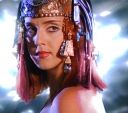
Hathor
Egyptian goddess of "Sex, drugs and rock m roll"
Goa'uld played by Suanne Braun
Episodes: "Hathor"; "Out of Mind"; "Into the Fire"
In Egyptian mythology, Hathor (Pronounced Hah-Thor) (Egyptian for house of Horus) was originally a personification of the Milky Way, which was seen as the milk that flowed from the udders of a heavenly cow. Hathor was an ancient goddess, and was worshipped as a cow-deity from at least 2700 BC, during the second dynasty. Her worship by the Egyptians goes back earlier however, possibly, even by the Scorpion King who ruled during the Protodynastic Period before the dynasties began. His name, Serqet, may refer to the goddess Serket. The two figures flanking the top of both sides of the Narmer Palette are interpreted as images of the cow goddess. The palette is among the earliest carved religious images known from the Egyptian culture. Hathor is referred to as She with Two Faces, which is not yet understood. Speculation about its meaning ranges from it being symbolic of life and afterlife to being the mirror and the face seen in it, but no clarification of this religious euphemism for the deity has arisen. The name Hathor refers to the encirclement by her, in the form of the Milky Way, of the night sky and consequently of the god of the sky, Horus who was said to be her son. Later she was described as the wife of Ra, the creator whose own cosmic birth was formalised in the Ogdoad cosmogeny after his worship arose and displaced that of Horus. At that time images of Ra bear the eye motif. An alternate name for Hathor, which persisted for 3,000 years, was Mehturt (also spelt Mehurt, Mehet-Weret, and Mehet-uret), meaning 'great flood, a direct reference to her being the milky way.
The Milky Way was seen as a waterway in the heavens, sailed upon by both the sun deity and the king, leading the ancient Egyptians to describe it as The Nile in the Sky. Due to this, and the name mehturt, she was identified as responsible for the yearly inundation of the Nile. Another consequence of this name is that she was seen as a herald of imminent birth, as when the amniotic sac breaks and floods its waters, it is a medical indicator that the child is due to be born extremely sooninterpretation of the Milky Way was that it was the primal snake, Wadjet, the protector of Egypt who was closely associated with Hathor and other early deities among the various aspects of the great mother goddess, including Mut and Naunet. Hathor also was favoured as a protector in desert regions (see Serabit el-Khadim).
Associations, images, and symbols
Hathor's identity as a cow, perhaps depicted as such on the Narmer Palette, meant that she became identified with another ancient cow-goddess of fertility, Bat. It still remains an unanswered question amongst Egyptologists as to why Bat survived as an independent goddess for so long. Bat was, in some respects, connected to the Ba, an aspect of the soul, and so Hathor gained an association with the afterlife. It was said that, with her motherly character, Hathor greeted the souls of the dead in Duat, and proffered them with refreshments of food and drink. She also was described sometimes as mistress of the necropolis. The assimilation of Bat, who was associated with the sistrum, a musical instrument, brought with it an association with music. In this later form, Hathor's cult became centred in Dendera in Upper Egypt and it was led by priestesses and priests who also were dancers, singers, and other entertainers.
Hathor also became associated with the menat, the turquoise musical necklace often worn by women. A hymn to Hathor says:
Thou art the Mistress of Jubilation, the Queen of the Dance, the Mistress of Music, the Queen of the Harp Playing, the Lady of the Choral Dance, the Queen of Wreath Weaving, the Mistress of Inebriety Without End. Essentially, Hathor had become a goddess of Joy, and so she was deeply loved by the general population, and truly revered by women, who aspired to embody her multifaceted role as wife, mother, and lover. In this capacity, she gained the titles of Lady of the House of Jubilation, and The One Who Fills the Sanctuary with Joy. The worship of Hathor was so popular that a lot of festivals were dedicated to her honor than any other Egyptian deity, and more children were named after this goddess than any other deity. Even Hathor's priesthood was unusual, in that both women and men became her priests.
In recent years, the theory of matriarchal cultures existing in profusion before 3,000 B.C.E. has taken root and bring into question the interpretation of Hathor as only wife or only mother. Hathor wears the head-dress of 18 serpents (traditionally associated with wisdom and women), the Cows Horns (Horns were associated with the crescent moon and thus, a woman's menstrual cycles). Hathor may have, quite possibly, been the original Mother God of the Egyptian people.
Bloodthirsty warrior
The Middle Kingdom was founded when Upper Egypt's pharaoh, Mentuhotep II, took control over Lower Egypt, which had become independent during the First Intermediate Period, by force. This unification had been achieved by a brutal war that was to last some twenty-eight years with many casualties, but when it ceased, calm returned, and the reign of the next pharaoh, Mentuhotep III, was peaceful, and Egypt once again became prosperous. A tale, from the perspective of Lower Egypt, developed around this experience of protracted war. In the tale following the war, Ra (representing the pharaoh of Upper Egypt) was no longer respected by the people (of Lower Egypt) and they ceased to obey his authority. The myth states that Ra communicated through Hathor's third Eye (Maat) and told her that some people in the land were planning to assasinate him. Hathor was so angry that the people she had created would be audacious enough to plan that, that she became Sekhmet (war goddess of Upper Egypt) to destroy them. Hathor (as Sekhmet) became bloodthirsty and the slaughter was great because she could not be stopped. As the slaughter continued, Ra saw the chaos down below and decided to stop the blood-thirsty Sekhmet. So he poured red huge quantities of blood-coloured beer on the ground to trick Sekhmet. She drank so much of it-thinking it to be blood-that she became drunk and returned to her former gentle self as Hathor.
Wife of Thoth
When Horus became identified as Ra in the changing Egyptian pantheon, under the name Ra-Horakhty, Hathor's position became unclear, since in later myths she had been the wife of Ra, but in earlier myths she was the mother of Horus. Many attempts to solve this gave Ra-Horakhty a new wife, Ausaas, to solve this issue around who was Ra-Horakhty's wife and Hathor became identified only as the mother of the new sun god. However, this left open the unsolved question of how Hathor could be his mother, since this would imply that Ra-Herakhty was a child of Hathor, rather than a creator. Such inconsistencies developed as the Egyptian pantheon changed over the thousands of years becoming very complex, and some were never resolved. In areas where the cult of Thoth became strong, Thoth was identified as the creator, leading to it being said that Thoth was the father of Ra-Horakhty, thus in this version Hathor, as the mother of Ra-Horakhty, was referred to as Thoth's wife. In this version of what is called the Ogdoad cosmogeny, Ra-Herakhty was depicted as a young child, often referred to as Neferhor. When considered the wife of Thoth, Hathor often was depicted as a woman nursing her child. Since Seshat had earlier been considered to be Thoth's wife, Hathor began to be attributed with many of Seshat's features. Since Seshat was associated with records and with acting as witness at the judgment of souls in Duat, these aspects became attributed to Hathor, which, together with her position as goddess of all that was good, lead to her being described as the (one who) expels evil, which in Egyptian is Nechmetawaj also spelt Nehmet-awai, and Nehmetawy). Nechmetawaj can also be understood to mean (one who) recovers stolen goods, and so, in this form, she became goddess of stolen goods. Outside the Thoth cult during these times, it was considered important to retain the position of Ra-Herakhty (i.e. Ra) as self-created (via only the primal forces of the Ogdoad). Consequently, Hathor could not be identified as Ra-Herakhty's mother. Hathor's role in the process of death, that of welcoming the newly dead with food and drink, lead, in such circumstances, to her being identified as a jolly wife for Nehebkau, the guardian of the entrance to the underworld and binder of the Ka. Nethertheless, in this form, she retained the name of Nechmetawaj, since her aspect as a returner of stolen goods was so important to society that it was retained as one of her roles.
Faience ball connected with Hathor.Votive faience balls are usually associated with this deity although the significance of their relationship remains unknown.
Hathor outside the Nile river in Egypt
Hathor was worshipped in Canaan in the eleventh century BC, which at that time was ruled by Egypt, at her holy city of Hazor, or Tel Hazor which the Old Testament claims was destroyed by Joshua (Joshua 11:13, 21).
The Sinai Tablets show that the Hebrew workers in the mines of Sinai about 1500 BC worshipped Hathor, whom they identified with their goddess Astarte.

Heimdall
Asgard. A scientist trying to uncover her races' genetic secrets.
Episodes: "Revelations", "Ripple Effect"
Heimdall (Old Norse Heimdallr, the prefix Heim- means home, the affix -dallr is of uncertain origin) is one of the Aesir (gods) in Norse mythology. Heimdall is the guardian of the gods and of the link between Midgard and Asgard, the Bifrost Bridge. Legends foretell that he will sound the Gjallarhorn, alerting the Ãsir to the onset of Ragnarök where the world ends and is reborn.
Heimdall is described as being so alert that he requires no sleep at all. He can hear the grass grow and see to the end of the world; he can hear a leaf fall. Heimdall is described as a son of Odin, perhaps a foster son. Heimdall was destined to be the last of the gods to perish at Ragnarök when he and Loki would slay one another.

Heru'ur
Egyptian Hawk-headed god of light and the sky
Goa'uld played by Douglas Arthurs
Episodes: "The Serpent's Lair"; Thor's Chariot"; "Secrets"; "The Serpent's Venom"
Horus is a god of the Ancient Egyptian religion, most commonly known by the Greek version Horus, of the Egyptian Heru/Har. Horus was an ancient and important deity and the Eye of Horus became an important Egyptian symbol of power. Horus had a man's body and a falcon's head. One of Horus' eyes became injured as after Osiris was murdered by his brother Set, Horus fought with Set for the throne of Egypt. In this battle one of his eyes was injured and later it was healed by Thoth. This healing of the eye became a symbol of renewal. Horus united Egypt and bestowed divinity upon the pharaohs who were viewed as incarnations of Horus in life and as Osiris in death.
Sky god
Horus was told by his mother Isis to protect the people of Egypt from Set the god of the underworld. Horus is the son of god, the light of the world, and the son of Neith a divine spirit. His mother is Isis.
Since he was god of the sky, Horus became depicted as a falcon, or as a falcon-headed man, leading to Horus' name, (in Egyptian, Heru), which meant The distant one. As falcon he may be shown on the Narmer Palette dating from the time of unification of upper and lower Egypt. Horus was also sometimes known as Nekheny (meaning falcon), although it has been proposed that Nekheny may have been another falcon-god, worshipped at Nekhen (city of the hawk), that became identified as Horus very early on. In this form, he was sometimes given the title Kemwer, meaning (the) great black (one). As Horus was the son of Osiris, and god of the sky, he became closely associated with the Pharaoh of Lower Egypt (where Horus was worshipped), and became their patron. The association with the Pharaoh brought with it the idea that he was the son of Isis, in her original form, who was regarded as a deification of the Queen.
It was said that after the world was created, Horus landed on a perch, known as the djeba, which literally translates as finger, in order to rest, which consequently became considered sacred. On some occasions, Horus was referred to as lord of the djeba (i.e. lord of the perch or lord of the finger), a form in which he was especially worshipped at Buto, known as Djebauti, meaning (ones) of the djeba (the reason for the plural is not understood, and may just have been a result of Epenthesis, or Paragoge). The form of Djebauti eventually became depicted as an heron, nevertheless continuing to rest on the sacred perch.
Sun god
Since Horus was said to be the sky, he was considered to also contain the sun and moon. It became said that the sun was one of his eyes and the moon the other, and that they traversed the sky when he, a falcon, flew across it. Thus he became known as Harmerty - Horus of two eyes. Later, the reason that the moon was not as bright as the sun was explained by a tale, known as the contestings of Horus and Set, originating as a metaphor for the conquest of Upper Egypt by Lower Egypt in about 3000BC. In this tale, it was said that Set, the patron of Upper Egypt, and Horus, the patron of Lower Egypt, had battled for Egypt brutally, with neither side victorious, until eventually the gods sided with Horus (see below).
As Horus was the ultimate victor he became known as Harsiesis, Heru-ur or Har-Wer, but more usually translated as Horus the Elder. In the struggle Set had lost a testicle, explaining why the desert, which Set represented, is infertile. Horus' left eye had also been gouged out, which explained why the moon, which it represented, was so weak compared to the sun. It was also said that during a new-moon, Horus had become blinded and was titled Mekhenty-er-irty (mḫnty r ỉr.ty 'He who has no eyes'), while when the moon became visible again, he was re-titled Khenty-irty (ḫnty r ỉr.ty 'He who has eyes'). While blind, it was considered that Horus was quite dangerous, sometimes attacking his friends after mistaking them for enemies.
Horus was occasionally shown in art as a naked boy with a finger in his mouth sitting on a lotus with his mother. In the form of a youth, Horus was referred to as Neferhor. This is also spelled Nefer Hor, Nephoros or Nopheros (nfr ḥr.w) meaning 'The Good Horus'.
War god
Horus was also said to be a war god and a hunter's god; since he was associated with the falcon. Thus he became a symbol of majesty and power as well as the model of the pharaohs.
Furthermore Nemty (also a war god meaning "He who travels") was later identified as Horus.
Conqueror of Set
After Set killed his father, Osiris, Horus had many battles with Set, not only to avenge his father, but to chose the rightful ruler of Egypt. One scene stated how Horus was on the verge of killing Set; but his mother (and Set's sister), Isis, stopped him. Isis injured Horus, but eventually healed him.
By the Nineteenth dynasty, the enmity between Set and Horus, in which Horus had ripped off one of Set's testicles, was represented as a separate tale. According to Papyrus Chester-Beatty I, Set is depicted as trying to prove his dominance by seducing Horus and then having intercourse with him. However, Horus places his hand between his thighs and catches Set's semen, then subsequently throws it in the river, so that he may not be said to have been inseminated by Set. Horus then deliberately spreads his own semen on some lettuce, which was Set's favorite food (the Egyptians thought that lettuce was phallic). After Set has eaten the lettuce, they go to the gods to try to settle the argument over the rule of Egypt. The gods first listen to Set's claim of dominance over Horus, and call his semen forth, but it answers from the river, invalidating his claim. Then, the gods listen to Horus' claim of having dominated Set, and call his semen forth, and it answers from inside Set.
This myth, along with others, could be seen as an explanation of how the two kingdoms of Egypt (Upper and Lower) came to be united. Horus was seen as the God of Lower Egypt, and Set as the God of Upper Egypt (which happens to be south of the upper Delta region). In this myth, the respective Upper and Lower deities have a fight, through which Horus is the victor. However, some of Horus (representing Lower Egypt) enters into Set (Upper Egypt) thus explaining why Lower Egypt is dominant over the Upper Egyptians. Set's regions were then considered to be of the desert.
But the battle wasn't over yet, and the other gods were getting tired from over eighty years of fighting and challenges. Horus and Set challenged each other to a boat race, where they each raced in a boat made of stone. Horus and Set agreed, and the race started. But Horus had a secret weapon: his boat was made of wood, not stone. Set's boat, being made of heavy stone, sank, but Horus's didn't. Horus then won the race, and Set stepped down and officially gave Horus the throne of Egypt. But after the New Kingdom, Set still was considered Lord of the desert and its oases.
Heru-p-khart (Horus the Younger)
Horus the Younger, is represented in the form of a youth wearing a lock of hair (a sign of youth) on the right side of his head. In addition, he usually wears the united crowns of Egypt,He is a form of the rising sun, representing its earliest light. This is thought to be the original form of Horus. His name meaning 'high' or 'distant' reflects his sky nature.
Heru-ur (Horus the Elder)
In this form he represented the god of light and the husband of Hathor. He was one of the oldest gods of ancient Egypt. He became the patron of Nekhen (Heirakonpolis) and the first national god (God of the Kingdom). Later he also became the patron of the pharaohs. He was seen as a great falcon with outstretched wings whose right eye was the sun and the left one was the moon.
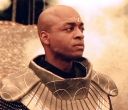
Imhotep
Egyptian architect who became a god
Goa'uld played by Rick Worthy
Episode: "The Warrior"
Imhotep (sometimes spelled Immutef, Im-hotep, or Ii-em-Hotep, circa (1/4/2650–12/4/2600 BC) was an Egyptian polymath, who served under the Third Dynasty king, Djoser, as chancellor to the pharaoh and high priest of the sun god Ra at Heliopolis. He is considered to be the first engineer, architect and physician in history known by name. The full list of his titles is:
Chancellor of the King of Lower Egypt, Doctor, First after the King of Upper Egypt, Administrator of the Great Palace, Hereditary nobleman, High Priest of Heliopolis, Builder, Chief Carpenter, Chief Sculptor and Maker of Vases in Chief.
Imhotep was one of very few mortals to be depicted as part of a pharaoh's statue. He was one of only a few commoners ever to be accorded divine status after death. The center of his cult was Memphis. From the First Intermediate Period onward Imhotep was also revered as a poet and philosopher. His sayings were famously referred to in poems: I have heard the words of Imhotep and Hordedef with whose discourses men speak so much.
The location of Imhotep's tomb was lost in antiquity and is still unknown, despite efforts to find it. The general consensus is that it is at Saqqara. Imhotep's historicity is confirmed by two contemporary inscriptions made during his lifetime on the base or pedestal of one of Djoser's statues (Cairo JE 49889) and also by a graffito on the enclosure wall surrounding Sekhemkhet's unfinished step-pyramid. The latter inscription suggests that Imhotep outlived Djoser and went on to serve in the construction of king Sekhemkhet's pyramid which was abandoned due to this ruler's brief reign
Attribution of achievements and inventions
Most known information about him is based on hearsay and conjecture. The ancient Egyptians credited him with many inventions. For example, it is claimed that he invented the papyrus scroll. James Henry Breasted says of Imhotep:
"In priestly wisdom, in magic, in the formulation of wise proverbs; in medicine and architecture; this remarkable figure of Zoser's reign left so notable a reputation that his name is not forgotten to this day. He was the patron spirit of the later scribes, to whom they regularly poured out a libation from the water-jug of their writing outfit before beginning their work."
Engineering and architecture
As one of the officials of the Pharaoh, Djosèr, he designed the Pyramid of Djoser (the Step Pyramid) at Saqqara in Egypt in 2630–2611 BC. He may have been responsible for the first known use of columns in architecture. As an instigator of Egyptian culture, Imhotep's idealized image lasted well into the Ptolemaic period. The Egyptian historian Manetho credited him with inventing the method of a stone-dressed building during Djoser's reign, however he was not the first to actually build with stone. Stone walling, flooring, lintels, and jambs had appeared sporadically during the Archaic Period, though it is true that a building of the Step Pyramid's size and made entirely out of stone had never before been constructed.
Medicine
Imhotep is credited with being the founder of Egyptian medicine and with being the author of a medical treatise remarkable for being devoid of magical thinking, the so-called Edwin Smith papyrus containing anatomical observations, ailments, and cures. The surviving papyrus was probably written around 1700 BC but may be a copy of texts a thousand years older. This attribution of authorship is speculative, however.
Birth myths
According to myth Imhotep's mother was a mortal named Kheredu-ankh, elevated later to semi-divine status by claims that she was the daughter of Banebdjedet. Conversely, as the "Son of Ptah", his mother was sometimes claimed to be Sekhmet, the patron of Upper Egypt whose consort Ptah was often said to be.
Deification
As Imhotep was considered the inventor of healing, he was also sometimes said to be the one who held up the goddess Nut (the deification of the sky), as the separation of Nut and Geb (the deification of the earth) was said to be what held back chaos. Due to the position this would have placed him in, he was also sometimes said to be Nut's son. In artwork he also is linked with the great goddess, Hathor, who eventually became identified as the wife of Ra. He also was associated with Maat, the goddess who personified the concept of truth, cosmic order, and justice—having created order out of chaos and being responsible for maintaining it. Also after Death, the Ancient Egyptians believed Imhotep became a god.
Two thousand years after his death, his status was raised to that of a deity. He became the god of medicine and healing. He later was linked to Asclepius by the Greeks. He was associated with Amenhotep son of Hapu, who was another deified architect, in the region of Thebes where they were worshipped as "brothers".
Legacy
The Encyclopedia Britannica says, "The evidence afforded by Egyptian and Greek texts support the view that Imhotep's reputation was very respected in early times... His prestige increased with the lapse of centuries and his temples in Greek times were the centers of medical teachings."
It is Imhotep, says Sir William Osler, who was the real 'Father of Medicine', "the first figure of a physician to stand out clearly from the mists of antiquity."
Imhotep was also identified with Thoth, the Egyptian god of writing, education, literacy and scribes through the Greco-Roman Period.
Imhotep and the Joseph of the Old Testament
The Upper Egyptian Famine Stela, dating from the Ptolemaic period, bears an inscription containing a legend about a famine of seven years during the reign of Djoser. Imhotep is credited with having been instrumental in ending it: one of his priests explained the connection between the god Khnum and the rise of the Nile to the king, who then had a dream in which the Nile god spoke to him, promising to end the drought. The parallels with the biblical story of Joseph have long been commented upon. More recently, the Joseph parallels have led some alternative historians to identify Imhotep with Joseph, and to argue that the supposedly thousand years separating them are indicative of a faulty chronology.

Kali
Hindu goddess of transformation
Goa'uld played by Suleka Mathew
Episodes: "Summit"; "Last Stand"
Kali, also known as Kalika, is a Hindu goddess associated with death and destruction. The name Kali means "black", but has by folk etymology come to mean "force of time (kala)". Despite her negative connotations, she is today considered the goddess of time and change. Although sometimes presented as dark and violent, her earliest incarnation as a figure of annihilation still has some influence. More complex Tantric beliefs sometimes extend her role so far as to be the "ultimate reality" or Brahman. She is also revered as Bhavatarini (literally "redeemer of the universe"). Comparatively recent devotional movements largely conceive Kali as a benevolent mother goddess.
Kali is represented as the consort of god Shiva, on whose body she is often seen standing. She is associated with many other Hindu goddesses like Durga, Bhadrakali, Sati, Rudrani, Parvati and Chamunda. She is the foremost among the Dasa-Mahavidyas, ten fierce Tantric goddesses.
Origin
Kali appears in the Mundaka Upanishad (section 1, chapter 2, verse 4) not explicitly as a goddess, but as the black tongue of the seven flickering tongues of Agni, the Hindu god of fire. However, the prototype of the figure now known as Kali appears in the Rig Veda, in the form of a goddess named Raatri. Raatri is considered to be the prototype of both Durga and Kali.
In the Sangam era, circa 200BCE-200CE, of Tamilakam, a Kali-like bloodthirsty goddess named Kottravai appears in the literature of the period.[citation needed] Like Kali she has dishevelled hair, inspires fear in those who approach her and feasts on battlegrounds littered with the dead.
It was the composition of the Puranas in late antiquity that firmly gave Kali a place in the Hindu pantheon. Kali or Kalika is described in the Devi Mahatmya (also known as the Chandi or the Durgasaptasati) from the Markandeya Purana, circa 300-600CE, where she is said to have emanated from the brow of the goddess Durga, a slayer of demons or avidya, during one of the battles between the divine and anti-divine forces. In this context, Kali is considered the 'forceful' form of the great goddess Durga. Another account of the origins of Kali is found in the Matsya Purana, circa 1500CE, which states that she originated as a mountain tribal goddess in the north-central part of India, in the region of Mount Kalanjara (now known as Kalinjar). However this account is disputed because the legend was of later origin.
The Kalika Purana a work of late ninth or early tenth century, is one of the Upapuranas. The Kalika Purana mainly describes different manifestations of the Goddess, gives their iconographic details, mounts, and weapons. It also provides ritual procedures of worshipping Kalika.
In Tantra
Goddesses play an important role in the study and practice of Tantra Yoga, and are affirmed to be as central to discerning the nature of reality as the male deities are. Although Parvati is often said to be the recipient and student of Shiva's wisdom in the form of Tantras, it is Kali who seems to dominate much of the Tantric iconography, texts, and rituals. In many sources Kali is praised as the highest reality or greatest of all deities. The Nirvana-tantra says the gods Brahma, Vishnu, and Shiva all arise from her like bubbles in the sea, ceaselessly arising and passing away, leaving their original source unchanged. The Niruttara-tantra and the Picchila-tantra declare all of Kali's mantras to be the greatest and the Yogini-tantra, Kamakhya-tantra and the Niruttara-tantra all proclaim Kali vidyas (manifestations of Mahadevi, or "divinity itself"). They declare her to be an essence of her own form (svarupa) of the Mahadevi.
In the Mahanirvana-tantra, Kali is one of the epithets for the primordial sakti, and in one passage Shiva praises her:
At the dissolution of things, it is Kala [Time] Who will devour all, and by reason of this He is called Mahakala [an epithet of Lord Shiva], and since Thou devourest Mahakala Himself, it is Thou who art the Supreme Primordial Kalika. Because Thou devourest Kala, Thou art Kali, the original form of all things, and because Thou art the Origin of and devourest all things Thou art called the Adya [primordial Kali. Resuming after Dissolution Thine own form, dark and formless, Thou alone remainest as One ineffable and inconceivable. Though having a form, yet art Thou formless; though Thyself without beginning, multiform by the power of Maya, Thou art the Beginning of all, Creatrix, Protectress, and Destructress that Thou art.
The figure of Kali conveys death, destruction, fear, and the consuming aspects of reality. As such, she is also a "forbidden thing", or even death itself. In the Pancatattva ritual, the sadhaka boldly seeks to confront Kali, and thereby assimilates and transforms her into a vehicle of salvation. This is clear in the work of the Karpuradi-stotra, a short praise to Kali describing the Pancatattva ritual unto her, performed on cremation grounds. (Samahana-sadhana)
He, O Mahakali who in the cremation-ground, naked, and with dishevelled hair, intently meditates upon Thee and recites Thy mantra, and with each recitation makes offering to Thee of a thousand Akanda flowers with seed, becomes without any effort a Lord of the earth. 0 Kali, whoever on Tuesday at midnight, having uttered Thy mantra, makes offering even but once with devotion to Thee of a hair of his Sakti [his female companion] in the cremation-ground, becomes a great poet, a Lord of the earth, and ever goes mounted upon an elephant.
The Karpuradi-stotra clearly indicates that Kali is more than a terrible, vicious, slayer of demons who serves Durga or Shiva. Here, she is identified as the supreme mistress of the universe, associated with the five elements. In union with Lord Shiva, who is said to be her spouse, she creates and destroys worlds. Her appearance also takes a different turn, befitting her role as ruler of the world and object of meditation. In contrast to her terrible aspects, she takes on hints of a more benign dimension. She is described as young and beautiful, has a gentle smile, and makes gestures with her two right hands to dispel any fear and offer boons. The more positive features exposed offer the distillation of divine wrath into a goddess of salvation, who rids the sadhaka of fear. Here, Kali appears as a symbol of triumph over death.
In Bengali Tradition
Kali is also central figure in late medieval Bengali devotional literature, with such devotees as Ramprasad Sen (1718-75). With the exception of being associated with Parvati as Shiva's consort, Kali is rarely pictured in Hindu mythology and iconography as a motherly figure until Bengali devotion beginning in the early eighteenth century. Even in Bengali tradition her appearance and habits change little, if at all.
The Tantric approach to Kali is to display courage by confronting her on cremation grounds in the dead of night, despite her terrible appearance. In contrast, the Bengali devotee appropriates Kali's teachings, adopting the attitude of a child. In both cases, the goal of the devotee is to become reconciled with death and to learn acceptance of the way things are. These themes are well addressed in Ramprasad's work.
Ramprasad comments in many of his other songs that Kali is indifferent to his wellbeing, causes him to suffer, brings his worldly desires to nothing and his worldly goods to ruin. He also states that she does not behave like a mother should and that she ignores his pleas:
Can mercy be found in the heart of her who was born of the stone? [a reference to Kali as the daughter of Himalaya]
Were she not merciless, would she kick the breast of her lord?
Men call you merciful, but there is no trace of mercy in you. Mother.
You have cut off the headset the children of others, and these you wear as a garland around your neck.
It matters not how much I call you "Mother, Mother." You hear me, but you will not listen.
To be a child of Kali, Ramprasad asserts, is to be denied of earthly delights and pleasures. Kali is said to not give what is expected. To the devotee, it is perhaps her very refusal to do so that enables her devotees to reflect on dimensions of themselves and of reality that go beyond the material world.
A significant portion of Bengali devotional music features Kali as its central theme and is known as Shyama Sangeet. Mostly sung by male vocalists, today even women have taken to this form of music. One of the finest singers of Shyama Sangeet is Pannalal Bhattacharya.
Iconography
Kali is portrayed mostly in two forms: the popular four-armed form and the ten-armed Mahakali form. In both of her forms, she is described as being black in color but is most often depicted as blue in popular Indian art. Her eyes are described as red with intoxication and in absolute rage, her hair is shown disheveled, small fangs sometimes protrude out of her mouth and her tongue is lolling. She is often shown naked or just wearing a skirt made of human arms and a garland of human heads. She is also accompanied by serpents and a jackal while standing on a seemingly dead Shiva, usually right foot forward to symbolize the more popular Dakshinamarga or right-handed path, as opposed to the more infamous and transgressive Vamamarga or left-handed path.
In the ten armed form of Mahakali she is depicted as shining like a blue stone. She has ten faces and ten feet and three eyes. She has ornaments decked on all her limbs. There is no association with Siva.
The Kalika Purana describes Kali as possessing a soothing dark complexion, as perfectly beautiful, riding a lion, four armed, holding a sword and blue lotuses, her hair unrestrained, body firm and youthful.

Khonsu
Egyptian god of the moon
Tok'ra working against Anubis and killed by Jaffa. Played by Adam Harrington
Episodes: "The Other Guys"
In Egyptian mythology, Khonsu (alternately Chonsu, Khensu, Khons, Chons or Khonshu) is an ancient lunar deity, from before formal structure was given to a pantheon.
Etymology
His name reflects the fact that the Moon (referred to as Aah in Egyptian) travels across the night sky, for it means The Wanderer, and also had the titles Embracer, Pathfinder, and Defender, as he was thought to watch over night travelers. As the god of light in the night, Khonsu was invoked to protect against wild animals, increase male virility, and to aid with healing. It was said that when Khonsu caused the crescent moon to shine, women conceived, cattle became fertile, and all nostrils and every throat was filled with fresh air.
Khonsu can also be understood to mean king's placenta, and consequently in early times, he was considered to slay the king's (i.e. the pharaoh's) enemies, and extract their innards for the king's use, metaphorically creating something resembling a placenta for the king. This bloodthirsty aspect leads him to be referred to, in such as the Pyramid texts, as the (one who) lives on hearts. He also became associated with more literal placentas, becoming seen as a deification of the royal placenta, and so a god involved with childbirth.
History
Khonsu gradually replaced the war-god Monthu as the son of Mut in Theban thought during the Middle Kingdom, because the pool at the temple of Mut was in the shape of a crescent moon. The father who had adopted Khonsu was thought to be Amun, who had already been changed into a more significant god by the rise of Thebes, and had had his wife changed to Mut. As these two were both considered extremely benign deities, Menthu gradually lost his more aggressive aspects.
In art, Khonsu was depicted as a man with the head of a hawk, wearing the crescent of the new moon subtending the disc of the full moon. His head was shaven except for the side-lock worn by Egyptian children, signifying his role as Khonsu the Child. Occasionally he was depicted as a youth holding the flail of the pharaoh, wearing a menat necklace. He was sometimes pictured on the back of a goose, ram, or two crocodiles. His sacred animal was the baboon, considered a lunar animal by the ancient Egyptians.
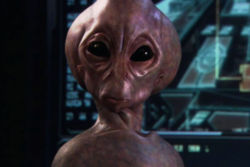
Kvasir
Norse God of Wisdom
Asgard played by Morris Chapdelaine(voice)
Episodes: "Fragile Balance"
Kvasir is a god in Norse mythology.
Kvasir was created from the saliva of all the gods, making him the wisest of the Vanir, but was quickly murdered by Fjalar and Galar, two dwarven brothers, in their cavern. They mixed his blood with honey and preserved it; the blood fermented into the Mead of Poetry. Later, they killed Gillingr and his wife.
According to Gylfaginning, it was Kvasir who suggested to the other gods that a net be used to catch Loki who had jumped into the river in the form of a salmon in order to escape punishment for his murder of Baldr. The figure has inspired the name of a Norwegian search engine of the same name.
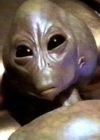
Loki
Norse God of Mischief and Fire
Asgard played by Peter DeLuise (voice)
Episode "Fragile Balance"
Loki is a god or jötunn (giant), or both. Loki's relation with the gods varies by source. Loki assists the gods, and sometimes causes problems for them. Loki is a shape shifter and in separate incidents he appears in the form of a salmon and a mare. Loki's positive relations with the gods ends with his role in engineering the death of the god Baldr. Loki is eventually bound by the gods with the entrails of one of his sons. A serpent drips venom from above him that his wife Sigyn collects into a bowl. However, Sigyn must empty the bowl when it is full, and the venom that drops in the mean time causes Loki to writhe in pain. During the events of Ragnarök, Loki is foretold to fight against the gods among the forces of the jötnar. There, he will encounter the god Heimdallr and the two will slay one another.
Loki is the son of Fárbauti and Laufey, and the brother of Helblindi and Býleistr. By the jötunn Angrboða, Loki is the father of Hel, the wolf Fenrir, and the world serpent Jörmungandr. By Sigyn, Loki is the father of Nari and/or Narfi. By the stallion Svaðilfari, Loki is the mother of the eight-legged horse Sleipnir. In addition, Loki is referred to as the father of Váli in the Prose Edda.
Loki is attested in the Poetic Edda, compiled in the 13th century from earlier traditional sources; the Prose Edda and Heimskringla, written in the 13th century by Snorri Sturluson; the Norwegian Rune Poem, in the poetry of skalds, and in Scandinavian folklore. Loki may be depicted on the Snaptun Stone, the Kirkby Stephen Stone, and the Gosforth Cross. Scholars have proposed theories about the origins and development of Loki, the implications of the lore surrounding him, a possible connection between Loki and air or fire.

Marduk
Patron of the city of Babylon
Goa'uld after being trapped for centuries, Marduk takes over the body of one of the Russian Stargate team and is later killed by SG-1. Played by Alexander Kalugin
Episodes: "The Tomb"
Marduk was the Babylonian name of a late-generation god from ancient Mesopotamia and patron deity of the city of Babylon, who, when Babylon permanently became the political center of the Euphrates valley in the time of Hammurabi (18th century BC), started to slowly rise to the position of the head of the Babylonian pantheon, a position he fully acquired by the second half of the second millennium BC.
Nibiru, to the Babylonians, was the celestial body or region sometimes associated with the god Marduk.
History
Marduk's original character is obscure but he was later on connected with water, vegetation, judgment, and magic. He was also regarded as the son of Ea (Sumerian Enki) and Damkina and the heir of Anu, but whatever special traits Marduk may have had were overshadowed by the political development through which the Euphrates valley passed and which led to imbuing him with traits belonging to gods who at an earlier period were recognized as the heads of the pantheon. There are particularly two gods-Ea and Enlil-whose powers and attributes pass over to Marduk. In the case of Ea, the transfer proceeded pacifically and without effacing the older god. Marduk took over the identity of Asarluhi, the son of Ea and god of magic, so that Marduk was integrated in the pantheon of Eridu where both Ea and Asarluhi originally came from. Father Ea voluntarily recognized the superiority of the son and hands over to him the control of humanity. This association of Marduk and Ea, while indicating primarily the passing of the supremacy once enjoyed by Eridu to Babylon as a religious and political centre, may also reflect an early dependence of Babylon upon Eridu, not necessarily of a political character but, in view of the spread of culture in the Euphrates valley from the south to the north, the recognition of Eridu as the older centre on the part of the younger one.
While the relationship between Ea and Marduk is marked by harmony and an amicable abdication on the part of the father in favour of his son, Marduk's absorption of the power and prerogatives of Enlil of Nippur was at the expense of the latter's prestige. After the days of Hammurabi, the cult of Marduk eclipsed that of Enlil; although Nippur and the cult of Enlil enjoyed a period of renaissance during the four centuries of Kassite control in Babylonia (c. 1570 BC-1157 BC), the definite and permanent triumph of Marduk over Enlil became felt within the Babylonian empire. The only serious rival to Marduk after ca. 1000 BC was Aššur in Assyria. In the south, Marduk reigned supreme. He is normally referred to as Bel "Lord", also bel rabim "great lord", bêl bêlim "lord of lords", ab-kal ilâni bêl terêti "leader of the gods", aklu bêl terieti "the wise, lord of oracles", muballit mîte "reviver of the dead", etc.
When Babylon became the capital of Mesopotamia, the patron deity of Babylon was elevated to the level of supreme god. In order to explain how Marduk seized power, Enûma Elish was written, which tells the story of Marduk's birth, heroic deeds and becoming the ruler of the gods. This can be viewed as a form of Mesopotamian apologetics. Also included in this document are the fifty names of Marduk.
In Enûma Elish, a civil war between the gods was growing to a climactic battle. The Anunnaki gods gathered together to find one god who could defeat the gods rising against them. Marduk, a very young god, answered the call and was promised the position of head god.
When he killed his enemy, he "wrested from him the Tablets of Destiny, wrongfully his" and assumed his new position. Under his reign humans were created to bear the burdens of life so the gods could be at leisure.
Marduk was depicted as a human, often with his symbol the snake-dragon which he had taken over from the god Tishpak. Another symbol that stood for Marduk was the spade.
People were named after Marduk. For example, some scholars speculate that the Biblical character of Mordechai (Book of Esther) used this Persian name to replace his original Hebrew name, Bilshan.
Babylonian texts talk of the creation of Eridu by the god Marduk as the first city, "the holy city, the dwelling of their [the other gods] delight".
Nabu, god of wisdom, is a son of Marduk.

Morrigan
Irish goddess of war and death on the battlefield
Goa'uld played by Bonnie Kilroe
Episodes: "Summit"; "Last Stand"
The MorrÃgan ("terror" or "phantom queen") or MórrÃgan ("great queen") (also known as MorrÃgu, MorrÃghan, Mor-RÃoghain, sometimes given in the plural as MorrÃgna) is a figure from Irish mythology who appears to have once been a goddess, although she is not explicitly referred to as such in the texts.
She is associated with sovereignty, prophecy, war and death on the battlefield. She sometimes appears in the form of a carrion crow, flying above the warriors, and in the Ulster cycle she also takes the form of an eel, a wolf and a cow. She is generally considered a war deity comparable with the Germanic Valkyries, although her association with cattle also suggests a role connected with fertility, wealth and the land.
She is often interpreted as a triple goddess, although membership of the triad varies: the most common combination is the MorrÃgan, the Badb and Macha, but sometimes includes Nemain, Fea, Anann and others.
Glosses and glossaries
The earliest sources for the MorrÃgan are glosses in Latin manuscripts, and glossaries (collections of glosses). In a 9th century manuscript containing the Latin Vulgate translation of the Book of Isaiah, the word Lamia is used to translate the Hebrew Lilith. A gloss explains this as "a monster in female form, that is, a morrÃgan". Cormac's Glossary (also 9th century), and a gloss in the later manuscript H.3.18, both explain the plural word gudemain ("spectres") with the plural form morrÃgna. The 8th century O'Mulconry's Glossary says that Macha is one of the three morrÃgna. It therefore appears that at this time the name MorrÃgan was seen as referring to a class of beings rather than an individual.
Ulster Cycle
The MorrÃgan's earliest narrative appearances, in which she is depicted as an individual, are in stories of the Ulster Cycle, where she has an ambiguous relationship with the hero Cúchulainn. In Táin Bó Regamna (the Cattle Raid of Regamain), Cúchulainn encounters the MorrÃgan as she drives a heifer from his territory. He challenges and insults her, not realising who she is. By this he earns her enmity. She makes a series of threats, and foretells a coming battle in which he will be killed. She tells him, enigmatically, "I guard your death".
In the Táin Bó Cuailnge queen Medb of Connacht launches an invasion of Ulster to steal the bull Donn Cuailnge; the MorrÃgan, glossed as equivalent to Alecto of the Greek Furies, appears to the bull in the form of a crow and warns him to flee. Cúchulainn defends Ulster by fighting a series of single combats at fords against Medb's champions. In between combats the MorrÃgan appears to him as a young woman and offers him her love, and her aid in the battle, but he spurns her. In response she intervenes in his next combat, first in the form of an eel who trips him, then as a wolf who stampedes cattle across the ford, and finally as a red heifer leading the stampede, just as she had threatened in their previous encounter. However Cúchulainn wounds her in each form and defeats his opponent despite her interference. Later she appears to him as an old woman bearing the same three wounds that her animal forms sustained, milking a cow. She gives Cúchulainn three drinks of milk. He blesses her with each drink, and her wounds are healed. As the armies gather for the final battle, she prophesies the bloodshed to come.
In one version of Cúchulainn's death-tale, as the hero rides to meet his enemies, he encounters the MorrÃgan as a hag washing his bloody armour in a ford, an omen of his death. Later in the story, mortally wounded, Cúchulainn ties himself to a standing stone with his own entrails so he can die upright, and it is only when a crow lands on his shoulder that his enemies believe he is dead.
Mythological Cycle
The MorrÃgan also appears in texts of the Mythological Cycle. In the 12th century pseudohistorical compilation Lebor Gabála Ãrenn she is listed among the Tuatha Dé Danann as one of the daughters of Ernmas, granddaughter of Nuada.
The first three daughters of Ernmas are given as Ãriu, Banba and Fódla. Their names are synonyms for Ireland, and they were married to Mac Cuill, Mac Cécht and Mac Gréine, the last three Tuatha Dé Danann kings of Ireland. Associated with the land and kingship, they probably represent a triple goddess of sovereignty. Next come Ernmas's other three daughters: the Badb, Macha and the MorrÃgan. A quatrain describes the three as wealthy, "springs of craftiness" and "sources of bitter fighting". The MorrÃgan's name is said to be Anann, and she had three sons, Glon, Gaim and Coscar. According to Geoffrey Keating's 17th century History of Ireland, Ãriu, Banba and Fódla worshipped the Badb, Macha and the MorrÃgan respectively, suggesting that the two triads of goddesses may be seen as equivalent.
The MorrÃgan also appears in Cath Maige Tuireadh (the Battle of Mag Tuired). On Samhain she keeps a tryst with the Dagda before the battle against the Fomorians. When he meets her she is washing herself, standing with one foot on either side of the river Unius. In some sources she is believed to have created the river. After they have sex, the MorrÃgan promises to summon the magicians of Ireland to cast spells on behalf of the Tuatha Dé, and to destroy Indech, the Fomorian king, taking from him "the blood of his heart and the kidneys of his valour". Later, we are told, she would bring two handfuls of his blood and deposit them in the same river (however, we are also told later in the text that Indech was killed by Ogma).
As battle is about to be joined, the Tuatha Dé leader, Lug, asks each what power they bring to the battle. The MorrÃgan's reply is difficult to interpret, but involves pursuing, destroying and subduing. When she comes to the battlefield she chants a poem, and immediately the battle breaks and the Fomorians are driven into the sea. After the battle she chants another poem celebrating the victory and prophesying the end of the world.
In another story she lures away the bull of a woman called Odras, who follows her to the otherworld via the cave of Cruachan. When she falls asleep, the MorrÃgan turns her into a pool of water.
Nature and functions
The MorrÃgan is often considered a triple goddess, but her supposed triple nature is ambiguous and inconsistent. Sometimes she appears as one of three sisters, the daughters of Ernmas: the MorrÃgan, the Badb and Macha. Sometimes the trinity consists of the Badb, Macha and Nemain, collectively known as the MorrÃgan, or in the plural as the MorrÃgna. Occasionally Fea or Anu also appear in various combinations. However the MorrÃgan also frequently appears alone, and her name is sometimes used interchangeably with the Badb, with no third "aspect" mentioned.
The MorrÃgan is usually interpreted as a "war goddess": W. M. Hennessey's "The Ancient Irish Goddess of War," written in 1870, was influential in establishing this interpretation. Her role often involves premonitions of a particular warrior's violent death, suggesting a link with the Banshee of later folklore. This connection is further noted by Patricia Lysaght: "In certain areas of Ireland this supernatural being is, in addition to the name banshee, also called the badhb".
It has also been suggested that she was closely tied to Irish männerbund groups (described as "bands of youthful warrior-hunters, living on the borders of civilized society and indulging in lawless activities for a time before inheriting property and taking their places as members of settled, landed communities") and that these groups may have been in some way dedicated to her. If true, her worship may have resembled that of Perchta groups in Germanic areas.
However, Máire Herbert has argued that "war per se is not a primary aspect of the role of the goddess", and that her association with cattle suggests her role was connected to the earth, fertility and sovereignty; she suggests that her association with war is a result of a confusion between her and the Badb, who she argues was originally a separate figure. She can be interpreted as providing political or military aid, or protection to the king - acting as a goddess of sovereignty, not necessarily a war goddess.
There is a burnt mound site in County Tipperary known as Fulacht na Mór RÃoghna - "the cooking pit of the MórrÃgan". The fulachta sites are found in wild areas, and usually associated with outsiders such as the Fianna and the above-mentioned männerbund groups, as well as with the hunting of deer. The cooking connection also suggests to some a connection with the three mythical hags who cook the meal of dogflesh that brings the hero Cúchulainn to his doom. The Dá Chich na Morrigna or two breasts of the MórrÃgan, a pair of hills in County Meath, suggest to some a role as a tutelary goddess, comparable to Danu or Anu, who has her own hills in County Kerry. Other goddesses known to have similar hills are Ãine and Grian of County Limerick who, in addition to a tutelary function, also have solar attributes.

Mut
Egyptian mother godess of all
Goa'uld played by Victor Talmadege
Episodes: "Profacy"
Mut, which means mother, was an ancient Egyptian mother goddess with multiple aspects that changed over the thousands of years of the culture. An alternate spelling is Mout. She was depicted as a white vulture most often. She was considered a primal deity, associated with the waters from which everything was born through parthenogenesis. She also was depicted as a woman with the crowns of Egypt upon her head. The rulers of Egypt each supported her worship in their own way to emphasize their own authority and right to rule through an association with Mut.
Some of Mut's many titles included World-Mother, Eye of Ra, Queen of the Goddesses, Lady of Heaven, Mother of the Gods, and She Who Gives Birth, But Was Herself Not Born of Any.
Most of these titles reveal the worship of her as the primary mother goddess deity of ancient times.
Changes of mythological position
Mut was a title of the primordial waters of the cosmos, Naunet, in the Ogdoad cosmogony during what is called the Old Kingdom, the third through sixth dynasties, dated between 2,686 to 2,134 B.C. However, the distinction between motherhood and cosmic water later diversified and lead to the separation of these identities, and Mut gained aspects of a creator goddess, since she was the mother from which the cosmos emerged.
The hieroglyph for Mut's name, and for mother itself, was that of a white vulture, which the Egyptians believed were very maternal creatures. Indeed, since Egyptian white vultures have no significant differing markings between female and male of the species, being without sexual dimorphism, the Egyptians believed they were all females, who conceived their offspring by the wind herself, another parthenogenic concept.
Much later new myths held that since Mut had no parents, but was created from nothing, consequently, she could not have children and so adopted one instead.
Making up a complete triad of deities for the later pantheon of Thebes, it was said that Mut had adopted Menthu, god of war. This choice of completion for the triad should have proved popular, but because the isheru, the sacred lake outside Mut's ancient temple in Karnak at Thebes, was the shape of a crescent moon, Khonsu, the moon god eventually replaced Menthu as Mut's adopted son.
Lower and upper Egypt both already had patron deities–Wadjet and Nekhbet–respectively, indeed they also had lioness protector deities–Bast and Sekhmet–respectively. When Thebes rose to greater prominence, Mut absorbed these warrior goddesses as some of her aspects. First, Mut became Mut-Wadjet-Bast, then Mut-Sekhmet-Bast (Wadjet having merged into Bast), then Mut also assimilated Menhit, who was also a lioness goddess, and her adopted son's wife, becoming Mut-Sekhmet-Bast-Menhit, and finally becoming Mut-Nekhbet.
Later in ancient Egyptian mythology deities of the pantheon were identified as equal pairs, female and male counterparts, having the same functions. In the later Middle Kingdom, when Thebes grew in importance, its patron, Amun also became more significant, and so Amaunet, who had been his female counterpart, was replaced with a more substantial mother-goddess, namely Mut, who became his wife. In that phase, Mut and Amun had a son, Khonsu, another moon deity.
The authority of Thebes waned later and Amun was assimilated into Ra. Mut, the doting mother, was assimilated into Hathor, the cow-goddess and mother of Horus who had become identified as Ra's wife. Subsequently, when Ra assimilated Atum, the Ennead was absorbed as well, and so Mut-Hathor became identified as Isis (either as Isis-Hathor or Mut-Isis-Nekhbet), the most important of the females in the Ennead (the nine}, and the patron of the queen. The Ennead proved to be a much more successful identity and the compound triad of Mut, Hathor, and Isis, became known as Isis alone—a cult that endured into the 600s A.D. and spread to Greece, Rome, and Britain.
Depictions
In art, Mut was pictured as a woman with the wings of a white vulture, holding an ankh, wearing the united crown of Upper and Lower Egypt and a dress of bright red or blue, with the feather of the goddess Ma'at at her feet.
Alternatively, as a result of her assimilations, Mut is sometimes depicted as a cobra, a cat, a cow, or as a lioness as well as the white vulture.
In Karnak
There are temples dedicated to Mut all over modern-day Egypt and Sudan, reflecting the wide-spread worship of her, but the center of her cult became the temple in Karnak. That temple had the statue that was regarded as an embodiment of her real ka. Her devotions included daily rituals by the pharaoh and her priestesses. Interior reliefs depict scenes of the priestesses, currently the only known remaining example of worship in ancient Egypt that was exclusively administered by women.
Usually the queen, who always carried the royal lineage among the rulers of Egypt, served as the chief priestess in the temple rituals. The pharaoh participated also and would become a deity after death. In the case when the pharaoh was female, records of one example indicate that she had her daughter serve as the high priestess in her place. Often priests served in the administration of temples and oracles where priestesses performed the traditional religious rites. These rituals included music and drinking.
The pharaoh Hatshepsut had the ancient temple to Mut at Karnak rebuilt during her rule in the Eighteenth Dynasty. Previous excavators had thought that Amenhotep III, her grandson, had the temple built because of the hundreds of statues found there of Sekhmet that bore his name. However, Hatshepsut, who completed an enormous number of temples and public buildings, had completed the work seventy-five years earlier. She began the custom of depicting Mut with the crown of both Upper and Lower Egypt. It is thought that Amenhotep III removed most signs of Hatshepsut, while taking credit for the projects she had built.
Hatshepsut was a pharaoh who brought Mut to the fore again in the Egyptian pantheon, identifying strongly with the goddess. She stated that she was a descendant of Mut. She also associated herself with the image of Sekhmet, as the more aggressive aspect of the goddess, having served as a very successful warrior during the early portion of her reign as pharaoh.
Later in the same dynasty, Akhenaten suppressed the worship of Mut as well as the other deities when he promoted the monotheistic worship of his sun god, Aten. Tutankhamun later re-established her worship and his successors continued to associate themselves with Mut afterward.
Ramesses II added more work on the Mut temple during the nineteenth dynasy, as well as rebuilding an earlier temple in the same area, rededicating it to Amun and himself. He placed it so that people would have to pass his temple on their way to that of Mut.
Kushite pharaohs expanded the Mut temple and modified the Ramesses temple for use as the shrine of the celebrated birth of Amun and Khonsu, trying to integrate themselves into divine succession. They also installed their own priestesses among the ranks of the priestesses who officiated at the temple of Mut.
The Greek Ptolemaic dynasty added its own decorations and priestesses at the temple as well and used the authority of Mut to emphasize their own interests.
Later, the Roman emperor Tiberius rebuilt the site after a severe flood and his successors supported the temple until it fell into disuse, sometime around the third century A.D. Some of the later Roman officials used the stones from the temple for their own building projects, often without altering the images carved upon them.

Nerus
Greek god of sea, shape shifting and prophecy
Goa'uld played by Maury Chaykin. Known for his gluttony, he has served Ba'al for centuries as a scientist and inventor. Presumed killed in Off the Grid
Episodes: "Beachhead", "Off The Grid"
Nereus, in Greek Mythology, was the eldest son of Pontus (the Sea) and Gaia (the Earth), a Titan who (with Doris) fathered the Nereids, with whom Nereus lived in the Aegean Sea. In the Iliad the Old Man of the Sea is the father of Nereids, though Nereus is not directly named. He was one of the manifestations of the Old Man of the Sea, never more so than when he was described, like Proteus, as a shapeshifter with the power of prophecy, who would aid heroes such as Heracles who managed to catch him even as he changed shapes. Nereus and Proteus ("first") seem to be two manifestations of the god of the sea who was supplanted by Poseidon when Zeus overthrew Cronus.
The earliest poet to link Nereus with the labours of Heracles was Pherekydes, according to a scholion on Apollonius of Rhodes.
During the course of the fifth century BCE, Nereus was gradually replaced by Triton, who does not appear in Homer, in the imagery of the struggle between Heracles and the sea-god who had to be restrained in order to deliver his information that was employed by the vase-painters, independent of any literary testimony.
Nereus was known for his truthfulness and virtue:
"But Pontos, the great sea, was father of truthful Nereus who tells no lies, eldest of his sons. They call him the Old Gentleman because he is trustworthy, and gentle, and never forgetful of what is right, but the thoughts of his mind are mild and righteous." — Hesiod, Theogony 233
The Attic vase-painters showed the draped torso of Nereus issuing from a long coiling scaly fishlike tail Bearded Nereus generally wields a staff of authority. He was also shown in scenes depicting the flight of the Nereides as Peleus wrestled their sister Thetis.
In Aelian's natural history, written in the early third century of the Common Era, Nereus was also the father of a watery consort of Aphrodite named Nerites who was transformed into "a shellfish with a spiral shell, small in size but of surpassing beauty."
Nereus was father to Thetis, one of the Nereids, who in turn was mother to the great Greek hero Achilles.

Nirrti
Hindu goddess of death
Goa'uld played by Jacqueline Samuda. Known for genetic manipulations in her search for a hoc'tar/perfect host. Killed in "Metamorphosis".
Episodes: "Fair Game", "Right of Passage", "Metamorphosis".
In Hinduism, Nirrti is one of the Guardians of the directions (dik-pala), representing the southwest (or-according Monier-Williams's Sanskrit-English Dictionary-the south). She was originally a goddess of death, connected with Devi, who later became the male Guardian. The gender shift also involved a union with Nirrta, the masculine aspect of the female Nirrti.
Alternative spellings of Nirrti include Nirriti and Nirrith
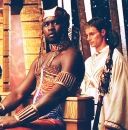
Olokun
African god of wisdom
Goa'uld: played by Kwesi Ameyaw. Know as the 'Owner of Oceans'; He is referred to in Death Knell, the Tok'ra report him killed by Ba'al in It's good to Be King
Episodes: "Summit", "Last Stand"
Olokun is considered the patron orisa of the descendants of Africans that were carried away during the Maafa, or what is sometimes referred to as the Transatlantic Slave Trade or Middle Passage. Olokun works closely with Oya (Deity of Sudden Change) and Egungun (Collective Ancestral Spirits) to herald the way for those that pass to ancestorship, as it plays a critical role in Death (Iku), Life and the transition of human beings and spirits between these two existences.
Olokun is experienced in male and female personifications, depending on what region and of West Africa He/She is worshipped. Olokun is personified in several human characteristics; patience, endurance, sternness, observation, meditation, appreciation for history, future visions, and royalty personified. Its characteristics are found and displayed in the depths of the Ocean. Its name means Owner (Olo) of Oceans (Okun).
Olokun also signifies unfathomable wisdom. That is, the instinct that there is something worth knowing, perhaps more than can ever be learned, especially the spiritual sciences that most people spend a lifetime pondering. Olokun also governs material wealth, psychic abilities, dreaming, meditation, mental health and water-based healing. Olokun is one of many Orisa known to help women that desire children. Olokun also is worshipped by those that seek political and social ascension, which is why heads of state, royalty, entrepreneurs and socialites often turn to Olokun to not only protect their reputations, but propel them further among the ranks of their peers.
Yemoja-Olokun-Mami Wata Connections
Some Afro-Cuban lineages worship Olokun in tandem with Yemoja (Yemaya/Yemanja). In the past Lukumi and Santeria worshippers considered these two Orisha to be manifestations of one other, although westerner devotees know now that they are distinct, but kindred energies that were paired together during the Maafa as a way of preserving both Orisha traditions. In nature, the bottom of the ocean represents Olokun. Yemoja is usually considered to the visible sections of the ocean in the West.
However in Africa, Yemoja is the divinity of Ogun River in Nigeria and Olokun is considered the mother of all bodies of water and as such is considered owner chiefly of the ocean, but all rivers. In Edo State (former Bendel State) Olokun is the patron Orisha of Ethiope River.
In Nigeria and Benin, Olokun is sometimes worshipped in tandem with Mami Wata. They do have similar temperaments and personas.
Olokun Priesthood
Lukumi Orisa worshippers in the U.S. and the Caribbean do not initiate Olokun priests. However, in their traditions, you can receive an Olokun shrine for personal prosperity. Omo Olokun (children of Olokun) are typically initiated to Yemoja in Lukumi lineages. In other Orisa lineages and “sects” in the west, particularly Oyotunji, Anago and all indigene Orisa’Ifa initiations to Olokun do take place.
Two Origin Stories of Olokun Worship
While most Olokun initiates in Africa are female, the legends that mark the beginning of Olokun worship feature stories of men being their initial worshippers.
The Hunter
There was a hunter that resided in Urhonigbe Benin city. One day he ventured off into the woods on a hunting expedition, in the chase of a bush pig he was attracted to the river Ethiope where he was taken the bottom of the river. It was here that he was introduced to the deity Olokun. He stayed in this under water abode for another three years and in the course of that three years he was encouraged to participate in spiritual rituals that went on every time. Equally, during this three years he learned the spiritual sciences and worship practices associated with Olokun.
Back in his home town, his family and neighbors assumed he was dead after being gone so long. They were surprised to say the least when he returned mute and dumbfounded (without the ability of speech or general sensibilities) carrying a water pot on his head. He only danced to the shock of townsfolk. Eventually the crowd that had gathered began to mock his dance and it started what was to become a 14-day tribute of ritual dancing to Olokun. At the end of this period the hunter began to talk again and chose to share some of his experiences. All skepticism about his story were eased as his began to do spiritual work that created positive results for those around him. He was named chief priest of Olokun at this point. Even until today, hunters re-enact this famous prodigal son’s life with the annual festival and Ekabo dance. Urhoniigbe’s Olokun temple sits on the spot where he rested his Olokun pot/shrine on the 14th day.
The Palm Tree
In Ebvoesi, there was a boy named Omobe (rascal, troublesome child) that had great physical ability and was trained to be a wrestler. As he grew older his wrestling abilities grew stronger and before long he was considered the greatest wrestler in the world. At his birth the local priest/diviner warned his parents to not allow Omobe to climb palm trees. But one day while his parents were away he decided to climb a palm tree any way. From high up he could peer into the spirit world and he noticed that several divinities had gathered for a fantastic wrestling match! He immediately climbed down and made his way to the spirit world to test his own luck amongst a variety of spirits. He beat every opponent. Ancestors, Gods and all others lost at his hands, even Ogun. Finally he prepared to wrestle Olokun. While he summoned all of his physical strength, Olokun drew on His spiritual powers.
During the match Omobe attempted to throw Olokun to the ground, but instead Olokun ended up firmly attached to his head. All attempts at removing Olokun from his head failed and Olokun declared it His permanent abode as a sign of Omobe’s arrogance and disrespect towards the other spirits. When Omobe returned home the local priest/diviner advised him to appease Olokun or die. So for seven days Omobe made sacrifice. On the last day Omobe was initiated as the first Olokun priest. After this Olokun loosened his grip on Omobe’s life.
It is said that Omobe’s lack of respect for his parent’s, and spiritual elders and the divinities had landed his in such dire straits.
Contradictory stories in Orisa culture
In Orisa culture it appears that some stories contradict or compete with one another. The disparity or differences that exist are well understood by indigenous practitioners. While the stories are regarded as fact, they are also understood to be indicators of historical and social factors, which obviously differ from region to region.
Communion with Olokun
Those with a connection with Olokun may experience Her/His messages and healing through dreams and when in contact with the ocean. Priests may use mirrors (scrying), clouds (sky-gazing) and more familiar oracles like 16-cowry divination to communicate with Olokun on behalf of self, client, community and nations.
Relationships as allegories
In female form among the Yoruba, Olokun is the wife of Olorun and, by him, the mother of Obatala and Odudua. Other relationships are numerous, especially when the gender of Olokun changes. Again, while these relationships are taken quite literally they actually serve to tell occult members which Orisa work well together in healing situations, as well to provide historical references to relationships between communities that serve as centers or hosts to main shrines for each of these Orisa.
Olokun is worshipped in Benin, Togo and among the Yoruba in Nigeria.

Osiris
Egyptian god of life, death and fertility
Goa'uld played by Anna-Louise Plowman. Symbiote to Sarah Gardner, serving Anubis. Captured and removed from the host in "Chimera".
Episodes: "The Curse", "Summit", "Revelations", "Chimera"
Osiris (Greek language, also Usiris; the Egyptian language name is variously transliterated Asar, Aser, Ausar, Ausir, Wesir, or Ausare) was an Egyptian god. Usually called the god of the Afterlife
Osiris is one of the oldest gods for whom records have been found; one of the oldest known attestations of his name is on the Palermo Stone of around 2500 BC. He was widely worshiped until the suppression of paganism by the early Christian church under Theodosius I in the later fourth century. The information we have on the myths of Osiris is derived from allusions contained in the Pyramid Texts (ca. 2400 BC), later New Kingdom source documents such as the Shabaka Stone and the Contending of Horus and Seth, and much later, in narrative style from the writings of Greek authors including Plutarch and Diodorus Siculus.
Osiris was not only merciful judge of the dead in the afterlife, but also the underworld agency that granted all life, including sprouting vegetation and the fertile flooding of the Nile River. The Kings of Egypt were associated with Osiris in death — as Osiris rose from the dead they would, in union with him, inherit eternal life through a process of imitative magic. By the New Kingdom all people, not just pharaohs, were believed to be associated with Osiris at death if they incurred the costs of the assimilation rituals.
Osiris was at times considered the oldest son of the Earth god, Geb, and the sky goddess, Nut as well as being brother and husband of Isis, with Horus being considered his posthumously begotten son.
Osiris was later associated with the name Khenti-Amentiu, which means 'Foremost of the Westerners' a reference to his kingship in the land of the dead.
Mythology
A shaven-headed priest of Osiris holding a canopic vase of Osiris with the hems of his robe. Ptolemaic Egypt. 1st century CE.The cult of Osiris had a particularly strong interest toward the concept of immortality. Plutarch recounts one version of the myth surrounding the cult in which Set (Osiris' brother) fooled Osiris into getting into a box, which he then shut, had sealed with lead, and threw into the Nile (sarcophagi were based on the box in this myth). Osiris' wife, Isis, searched for his remains until she finally found him embedded in a tree trunk, which was holding up the roof of a palace in Byblos on the Phoenician coast. She managed to remove the coffin and open it, but Osiris was already dead. She used a spell she had learned from her father and brought him back to life so he could impregnate her. After they finished, he died again, so she hid his body in the desert. Months later, she gave birth to Horus. While she was off raising him, Set had been out hunting one night, and he came across the body of Osiris. Enraged, he tore the body into fourteen pieces and scattered them throughout the land. Isis gathered up all the parts of the body, less the phallus which was eaten by a fish thereafter considered taboo by the Egyptians, and bandaged them together for a proper burial. The gods were impressed by the devotion of Isis and thus restored Osiris to life[clarify] in the form of a different kind of existence as the god of the underworld. Because of his death and resurrection, Osiris is associated with the flooding and retreating of the Nile and thus with the crops along the Nile valley.
Diodorus Siculus gives another version of the myth in which Osiris is described as an ancient king who taught the Egyptians the arts of civilization, including agriculture. Osiris is murdered by his evil brother Set, whom Diodorus associates with the evil Typhon ("Typhonian Beast") of Greek mythology. Typhon divides the body into twenty six pieces which he distributes amongst his fellow conspirators in order to implicate them in the murder. Isis and Horus avenge the death of Osiris and slay Typhon. Isis recovers all the parts of Osiris body, less the phallus, and secretly buries them. She made replicas of them and distributed them to several locations which then became centres of Osiris worship.
The tale of Osiris becoming fish-like is cognate with the story the Greek shepherd god Pan becoming fish like from the waist down in the same river Nile after being attacked by Typhon (see Capricornus). This attack was part of a generational feud in which both Zeus and Dionysus were dismembered by Typhon, in a similar manner as Osiris was by Set in Egypt
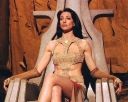
Qe'tesh
Egyptian goddess of beauty and sexual pleasure
Goa'uld played by Claudia Black Originally a Simarian goddess. Vala's former symbiote. One time ally/enemy of Athena, she was removed by a Tok'ra. Vala pretends to still have the symbiote in "The Powers That Be".
Episodes: "The Powers That Be"
In Egyptian mythology and Canaanite religion, Qetesh (also Qadesh, Quetesh, Kadesh, Qatesh, Qadeshet, Qudshu, Qodesh) referred to a Goddess or Goddesses of Love and Beauty (rather than fertility), who is thought to have originally been a Semitic divinity, from Canaanite religion, adopted into the Egyptian pantheon at a later date. Her husband may have been the god Resheph, identified with Nergal in Mesopotamian mythology, who was introduced in the Middle Kingdom. Having been adopted into Egyptian belief, it was decided that Qetesh, as the goddess of sex, should be the mother of Min, the god of fertility and thus sexual prowess. Although she was a popular goddess, she eventually became considered an aspect of Hathor, who had by that time become a goddess of pleasure.
She may also have been a title given to Asherah.
She was depicted as a naked woman standing on a lion, with the crescent moon (representing the night) on her head. Also, she was shown holding snakes (representing the penis) in her right hand and lotus flowers (representing the vulva) in her left.
Mayan Gods - Books for further reading
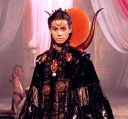
Ra
Egyptian Sun God
Goa'uld played by Jaye Davidson Ruler of Abydos. Killed by Col. O'Neil in the Stargate movie.
Ra (pronounced Rah) and sometimes as, Rê, is an ancient Egyptian sun god. By the fifth dynasty he became a major deity in ancient Egyptian religion, identified primarily with the mid-day sun, with other deities representing other positions of the sun. Ra changed greatly over time and in one form or another, much later he was said to represent the sun at all times of the day. The chief cult centre of Ra first was based in Heliopolis (ancient Inunu) meaning "City of the Sun." In later Egyptian dynastic times, Ra was merged with the god Horus, as Re-Horakhty (and many variant spellings). When his worship reached this position of importance in the Egyptian pantheon, he was believed to command the sky, the earth, and the underworld. He was associated with the falcon, the symbol of other sun deities who protected the pharaohs in later myths. After the deities were paired with pharaohs, the children of Hathor were considered to be fathered by Ra.
Although not the contemporary view, E. A. Wallis Budge (1857-1934) claims that Ra was the one god of Egyptian monotheism, of which all other deities were aspects, manifestations, phases, or forms. He asserted that Hymn to Ra (c. 1370s BC) was written to stress the pantheistic nature of Ra to combat encroaching polytheism. In this homage several deities are described not as beings in their own right, but as certain forms of Ra. For example:
"Praise be unto thee, O Ra, thou exalted Power, who dost enter into the habitations of Ament, behold [thy] body is Atum."
"Praise be unto thee, O Ra, thou exalted Power, who dost enter into the hidden palace of Anubis, behold [thy] body is Khepera."
Ra is most commonly pronounced 'rah'. It is more likely, however, that it should be pronounced as 'rei'; hence the alternative spelling Re rather than Ra. The meaning of Ra's name is uncertain, but it is thought if not a word for 'sun' it may be a variant of or linked to 'creative'. As his cult arose in the Egyptian pantheon, Ra often replaced Atum as the father, grandfather, and great-grandfather of the deities of the Ennead, and became a creator of the world.
Up until the mid-twentieth century, theories of Egyptologists postulated that the Heliopolis priesthood established this pesedjet at Heliopolis in order to place their local sun-god Ra above all other deities such as Osiris. Many Egyptologists now question this.
It appears almost certain, rather, that the Great Ennead-the nine deities of Atum, Geb, Isis, Nut, Osiris, Nephthys, Seth, Shu, and Tefnut-first appeared during the decline of Ra's cult in the sixth dynasty, and that after introduction of the new pesedjet the cult of Ra soon saw a great resurgence until the worship of Horus gained prominence. Afterward worship focused on the syncretistic solar deity Ra-harakhty (Ra, who is Horus of the Two Horizons). During the Amarna Period of the eighteenth dynasty, Akhenaten introduced worship of another solar deity Aten. The deified solar disc represented his preferred regional deity as he attempted to lessen the influence of the temple of Atum. He built the Wetjes Aten temple in Annu. Blocks from this temple later were used to build walls to the medieval city of Cairo and are included in some of the city gates. The cult of the Mnevis bull, an embodiment of Ra, had its centre here and established a formal burial ground for the sacrificed bulls north of the city.
In the later myths Ra was seen to have created Sekhmet, the early lioness war goddess who becomes Hathor, the cow goddess after she has sufficiently punished mankind as an avenging Eye of Ra. This changes the themes of much earlier myths into aspects of his and he is often said to be the father of both and brother to the god Osiris. Afterward nearly all forms of life supposedly were created only by Ra, who called each of them into existence by speaking their secret names and eventually humans were created from Ra's tears and sweat, hence the Egyptians call themselves the "Cattle of Ra."
For the Egyptians, the sun represented light, warmth, and growth. This made sun deities very important to Egyptians, and it is no coincidence that the sun came to be the ruler of all. In his myths, the sun was either seen as the body or eye of Ra.
Ra was thought to travel in a sun boat (The Boat of the Millions) to protect its fires from the primordial waters of the underworld it passed through during the night. Ra traveled in the sun boat with various other deities including Set and Mehen who defended against the monsters of the underworld, and Ma'at who guided the boat's course. The monsters included Apep, an enormous serpent who tried to stop the sun boat's journey every night by consuming it. The Ra myth saw the sunrise as the rebirth of the sun by the goddess Nut and the sky, thus attributing the concept of rebirth and renewal to Ra and strengthening his role as a creator god.
Early in his myths Ra was said to be married to Hathor and they were the parents of Horus. Later his myths changed Hathor into Ra's daughter. This featured prominently in the myth often called The Story of Sekhmet, in which Ra sent Hathor down to punish humanity as Sekhmet.

Sekhmet
Egyptian goddess of war and menstruation
Goa'uld played by Kristen Dalton. One time ally of Ra, exiled for plotting against him. DNA used to create 'Anna'. Killed in "Resurrection".
Episodes: "Resurrection"
In Egyptian mythology, Sekhmet (also spelled Sachmet, Sakhet, Sekmet, Sakhmet and Sekhet; and given the Greek name, Sacmis),was originally the warrior goddess of Upper Egypt. She is depicted as a lioness, the fiercest hunter known to the Egyptians. It was said that her breath created the desert. She was seen as the protector of the pharaohs. Her cult was so dominant in the culture that when the first pharaoh of the twelfth dynasty, Amenemhat I, moved the capital of Egypt to Itjtawy, the centre for her cult was moved as well. Religion, the royal lineage, and the authority to govern were intrinsically interwoven in Ancient Egypt during its ten thousand years of existence. Sekhmet is a solar deity, often considered an aspect of the Goddesses Hathor and Bast. She bears the solar disk, and the Uraeus which associates her with Wadjet and royalty. With these associations she can be construed as being a divine arbiter of Ma'at (Justice, or Order), The Eye of Horus and connecting her with Tefnut as well.
As Lower Egypt had been conquered by Upper Egypt, Sekhmet was seen as the more powerful of the two warrior goddesses, the other, Bast, being the similar warrior goddess of Lower Egypt. Consequently, it was Sekhmet who was seen as the Avenger of Wrongs, and the Scarlet Lady, a reference to blood, as the one with bloodlust. She also was seen as a special goddess for women, ruling over menstruation.
Sekhmet became identified in some later cults as a daughter of the new sun god, Ra, when his cult merged with and supplanted the worship of Horus (the son of Hathor, who was one of the oldest of Egyptian deities and gave birth daily to the sun). At that time many roles of deities were changed in the Egyptian myths. Some were changed further when the Greeks established a royal line of rulers that lasted for three hundred years and some of their historians tried to create parallels between deities in the two pantheons.
Her name suits her function and means, the (one who is) powerful. She also was given titles such as the (One) Before Whom Evil Trembles, the Mistress of Dread, and the Lady of Slaughter.
Sekhmet was believed to protect the pharaoh in battle, stalking the land, and destroying the pharaoh's enemies with arrows of fire. An early Egyptian sun deity also, her body was said to take on the bright glare of the midday sun, gaining her the title Lady of Flame. It was said that death and destruction were balm for her warrior's heart and that the hot desert winds were believed to be her breath.
In order to placate Sekhmet's wrath, her priestesses performed a ritual before a different statue of the goddess on each day of the year. This practice resulted in many images of the goddess being preserved. It is estimated that more than seven hundred statues of Sekhmet once stood in one funerary temple alone, that of Amenhotep III, on the west bank of the Nile. It was said that her statues were protected from theft or vandalism by coating them with anthrax.
Sekhmet also was seen as a bringer of disease as well as the provider of cures to such ills. The name "Sekhmet" literally became synonymous with physicians and surgeons during the Middle Kingdom. In antiquity, many members of Sekhmet's priesthood often were considered to be on the same level as physicians.
She was envisioned as a fierce lioness, and in art, was depicted as such, or as a woman with the head of a lioness, who was dressed in red, the colour of blood. Sometimes the dress she wears exhibits a rosetta pattern over each nipple, an ancient leonine motif, which can be traced to observation of the shoulder-knot hairs on lions. Tame lions were kept in temples dedicated to Sekhmet at Leontopolis.
To pacify Sekhmet, festivals were celebrated at the end of battle, so that the destruction would come to an end. During an annual festival held at the beginning of the year, a festival of intoxication, the Egyptians danced and played music to soothe the wildness of the goddess and drank great quantities of beer ritually to imitate the extreme drunkenness that stopped the wrath of the goddess-when she almost destroyed humankind. This may relate to averting excessive flooding during the inundation at the beginning of each year as well, when the Nile ran blood-red with the silt from upstream and Sekhmet had to swallow the overflow to save humankind.
In 2006, Betsy Bryan, an archaeologist with Johns Hopkins University excavating at the temple of Mut presented her findings about the festival that included illustrations of the priestesses being served to excess and its adverse effects being ministered to by temple attendants.[2] Participation in the festival was great, including the priestesses and the population. Historical records of tens of thousands attending the festival exist. These findings were made in the temple of Mut because when Thebes rose to greater prominence, Mut absorbed the warrior goddesses as some of her aspects. First, Mut became Mut-Wadjet-Bast, then Mut-Sekhmet-Bast (Wadjet having merged into Bast), then Mut also assimilated Menhit, another lioness goddess, and her adopted son's wife, becoming Mut-Sekhmet-Bast-Menhit, and finally becoming Mut-Nekhbet. These temple excavations at Luxor discovered a "porch of drunkenness" built onto the temple by the pharaoh Hatshepsut, during the height of her twenty year reign.
In a later myth developed around an annual drunken Sekhmet festival, Ra, by then the sun god of Upper Egypt, created her from a fiery eye gained from his mother (Hathor), to destroy mortals who conspired against him (Lower Egypt). In the myth, Sekhmet's blood-lust was not quelled at the end of battle and led to her destroying almost all of humanity, so Ra tricked her by turning the Nile red like blood (the Nile turns red every year when filled with silt during inundation) so that Sekhmet would drink it. However, the red liquid was not blood, but beer mixed with pomegranate juice so that it resembled blood, making her so drunk that she gave up slaughter and became an aspect of the gentle Hathor.
After Sekhmet's worship moved to Memphis, as Horus and Ra had been identified as one another under the name Ra-Herakhty-when the two religious systems were merged and Ra became seen as a form of Atum, known as Atum-Ra-so Sekhmet, as a form of Hathor, was seen as Atum's mother as Hathor had been the mother of the sun, giving birth anew to it every day. She then was seen as the mother of Nefertum, the youthful form of Atum who emerged in later myths, and so was said to have Ptah, Nefertum's father, as a husband when most of the goddesses acquired counterparts as paired deities.
Although Sekhmet again became identified as an aspect of Hathor, over time both evolved back into separate deities because the characters of the two goddesses were so vastly different. Later, as noted above, the creation goddess Mut, the great mother, gradually became absorbed into the identities of the patron goddesses, merging with Sekhmet, and also sometimes with Bast.
Sekhmet was considered to be the mother of Maahes.

Seth
Egyptian god of the desert/chaos
Goa'uld played by Robert Duncan. Hiding on Earth running a cult. Killed in "Seth".
Episodes: "Seth"
In Ancient Egyptian mythology, Set (also spelled Seth, Sutekh or Seteh) is an ancient god, who was originally the god of the desert, storms, and chaos. Because of the developments in the Egyptian language over the 3,000 years that Set was worshipped, by the Greek period, the t in Set was pronounced so indistinguishably from "th".
Origins of name
The exact translation of Set is unknown for certain, but is usually considered to be either (one who) dazzles or pillar of stability, one connected to the desert, and the other more to the institution of monarchy.
Desert god
Set represented in the tomb of Thutmose III. Set holds a scepter of was (Set-Staff) in his left hand.(KV34)Set was the god of the desert. Set was viewed as immensely powerful. Set carried the epithet, "His Majesty", shared only with Ra. Another common epithet was, of great of strength, and in one of the Pyramid Texts it states that the king's strength is that of Set. As chief god, he was patron of Upper Egypt (in the South- upstream), where he was worshiped, most notably at Ombos. The alternate form of his name, spelled Setesh, designates this supremacy, the extra sh and kh signifying majesty.
Scepters of Was represent Set. They are held by gods, priests, & pharaohs as a symbol of power.
The Set animal
In art, Set was mostly depicted as a mysterious and unknown creature, referred to by Egyptologists as the Set animal or Typhonic beast, with a curved snout, square ears, forked tail, and canine body, or sometimes as a human with only the head of the Set animal. It has no complete resemblance to any known creature, although it does resemble a composite of an aardvark, a donkey, and a jackal, all of which are desert creatures. The main species of aardvark present in ancient Egypt additionally had a reddish appearance (due to thin fur, which shows the skin beneath it). In some descriptions he has the head of a greyhound. The earliest known representation of Set comes from a tomb dating to the Naqada I phase of the Predynastic Period (circa 4000 BC-3500 BC), and the Set-animal is even found on a mace-head of the Scorpion King, a Protodynastic ruler.
Was ("power") scepters represent the Set-animal. Was scepters were carried by gods, pharaohs, and priests, as a symbol of power, and in later use, control over the force of chaos (Set). The head and forked tail of the Set-animal are clearly present. Was scepters are often depicted in paintings, drawings, and carvings of gods, and remnants of real Was scepters have been found constructed of faience or wood.
Conflict between Horus and Set
The myth of Set's conflict with Horus, Osiris and Isis appears in many Egyptian sources, including the Pyramid Texts, the Coffin Texts, the Shabaka Stone, inscriptions on the walls of the temple of Horus at Edfu, and various papyrus sources. The Chester Beatty Papyrus No. 1 contains the legend known as The Contention of Horus and Set. Classical authors also recorded the story, notably Plutarch's De Iside et Osiride.
These myths generally portray Osiris as a wise king and bringer of civilization, happily married to his sister Isis. Set was his envious younger brother, and he killed and dismembered Osiris. Isis reassembled Osiris' corpse and another god (in some myths Thoth and in others Anubis) embalmed him. As the archetypal mummy, Osiris reigned over the Afterworld as judge of the dead.
Osiris' son Horus was conceived by Isis with Osiris' corpse, or in some versions, only with pieces of his corpse. Horus naturally became the enemy of Set, and many myths describe their conflicts. In some of these myths Set is portrayed as Horus' older brother rather than uncle. In one of their fights Set gouged out Horus's left eye, which represented the moon; perhaps this myth served to explain why the moon is less bright than the sun.
The myth incorporated moral lessons for relationships between fathers and sons, older and younger brothers, and husbands and wives.
It has also been suggested that the myth may reflect historical events. According to the Shabaka Stone, Geb divided Egypt into two halves, giving Upper Egypt (the desert south) to Set and Lower Egypt (the region of the delta in the north) to Horus, in order to end their feud. However, according to the stone, in a later judgment Geb gave all Egypt to Horus. Interpreting this myth as a historical record would lead one to believe that Lower Egypt (Horus' land) conquered Upper Egypt (Set's land); but in fact Upper Egypt conquered Lower Egypt. So the myth cannot be simply interpreted. Several theories exist to explain the discrepancy. For instance, since both Horus and Set were worshiped in Upper Egypt prior to unification, perhaps the myth reflects a struggle within Upper Egypt prior to unification, in which a Horus-worshiping group subjected a Set-worshiping group. What is known is that during the Second Dynasty, there was a period in which the King Peribsen's name or Serekh - which had been surmounted by a Horus falcon in the First Dynasty - was for a time surmounted by a Set animal, suggesting some kind of religious struggle. It was ended at the end of the Dynasty by Khasekhemwy who surmounted his Serekh with both a falcon of Horus and a Set animal, indicating some kind of compromise had been reached.
Regardless, once the two lands were united, Seth and Horus were often shown together crowning the new pharaohs, as a symbol of their power over both Lower and Upper Egypt. Queens of the 1st Dynasty bore the title "She Who Sees Horus and Set." The Pyramid Texts present the pharaoh as a fusion of the two deities. Evidently, pharaohs believed that they balanced and reconciled competing cosmic principles. Eventually the dual-god Horus-Set appeared, combining features of both deities (as was common in Egyptian theology, the most familiar example being Amun-Re).
Later Egyptians interpreted the myth of the conflict between Set and Osiris/Horus as an analogy for the struggle between the desert (represented by Set) and the fertilizing floods of the Nile (Osiris/Horus).
Savior of Ra
As the Ogdoad system became more assimilated with the Ennead one, as a result of creeping increase of the identification of Atum as Ra, itself a result of the joining of Upper and Lower Egypt, Set's position in this became considered. With Horus as Ra's heir on Earth, Set, previously the chief god, for Lower Egypt, required an appropriate role as well, and so was identified as Ra's main hero, who fought Apep each night, during Ra's journey (as sun god) across the underworld.
He was thus often depicted standing on the prow of Ra's night barque spearing Apep in the form of a serpent, turtle, or other dangerous water animals. Surprisingly, in some Late Period representations, such as in the Persian Period temple at Hibis in the Khargah Oasis, Set was represented in this role with a falcon's head, taking on the guise of Horus, despite the fact that Set was usually considered in quite a different position with regard to heroism.
This assimilation also led to Anubis being displaced, in areas where he was worshiped, as ruler of the underworld, with his situation being explained by his being the son of Osiris. As Isis represented life, Anubis' mother was identified instead as Nephthys. This led to an explanation in which Nephthys, frustrated by Set's lack of sexual interest in her, disguised herself as the more attractive Isis, but failed to gain Set's attention because he was infertile. Osiris mistook Nephthys for Isis and they had conceived Anubis resulting in Anubis' birth. In some later texts, after Set lost the connection to the desert, and thus infertility, Anubis was identified as Set's son, as Set is Nephthys' husband.
In the mythology, Set has a great many wives, including some foreign Goddesses, and several children. Some of the most notable wives (beyond Nephthys/Nebet Het) are Neith (with whom he is said to have fathered Sobek), Amtcheret (by whom he is said to have fathered Upuat - though Upuat is also said to be a son of Anubis or Osiris), Tawaret, Hetepsabet (one of the Hours, a feminine was-beast headed goddess who is variously described as wife or daughter of Set), and the two Canaanite deities Anat and Astarte, both of whom are equally skilled in love and war - two things which Set himself was famous for.

Sokar
Egyptian god of the damned
Goa'uld who took on the persona of Satan. Played by David Palffy. Killed in "The Devil You Know".
Episodes: "Serpent's Song". "Jolinar's Memories", "The Devil You Know"
In Egyptian mythology, Seker (also spelt Sokar, and Sokaris, and in Greek, Socharis) was originally, during the Old Kingdom, the deification of the act of separating the Egyptian soul from the Ka, roughly the separation of soul from the body, after death. This was said to be enabled by the funerary ceremony of opening the mouth, and thus Seker was given his name, meaning cleaning of the mouth.
The Ba, roughly equivalent to the soul, was shown in art, as a human-headed bird fluttering above the Ka, roughly equivalent to the now-mummified empty shell of the body. Consequently, Seker became depicted as a mummified human who was falcon-headed, and had green skin, symbolising rebirth. The usual depiction of the Ba in this form led to Seker gaining the epithet great lord with two wings opened. A statue of Seker was often placed in tombs, the bottom of it containing the deceased's Book of the Dead, to encourage the successful separation and release of the Ba.
In Memphis, Seker was worshipped as the patron god of the necropolis, and so was known as (one who is) on the sand; the necropolis itself, then became known as Sakkara after his name. In Thebes he had a dedicated festival, known as the Henu Festival, in which an image of Seker was carried in a barque, representing the ferry that carried the deceased through Aaru.
His name could also be decomposed to mean adorned one, and so Seker gradually also became associated with the secondary function of being the patron god of jewellers, armourers, and other metal workers. Consequently, during the Middle Kingdom when Ptah became viewed as a god of craftsmen, and a god of reincarnation, Seker, as a god of a class of craftsmen, and a god involved in starting the process of reincarnation, became closely associated with Ptah. Eventually, Seker's identity was subsumed into that of Ptah, becoming Ptah-Seker. By the start of the New Kingdom, Ptah-Seker, as a funerary god, had become subsumed into the now much more important god of death, Osiris, becoming Ptah-Seker-Osiris.
Egyptian legends say that Seker's domain resided in the ever-shifting sands outside of Memphis. Unlike Osiris' kingdom (which was reserved for the blessed, consisted of fields and flowing water), Seker's domain was reserved for the wicked, and was shrouded in impenetrable blackness. It was populated with terrible serpents and other reptiles of "terrifying aspect". These creatures sometimes had two, or even three heads. They were meant to keep order in Seker's domain and keep his image. This was because Seker did not reside necessarily in his own domain, but in his hidden chambers deep into the earth. He rarely came up, so there was little desire for his cult members to want to reside there.
There is also a company of eight more minor gods in Seker's kingdom. Their job is to consummate the final destruction of the bodies of the damned. They emitted liquid fire from their mouths (destruction by fire was only used for the blessed or important) in order to get rid of the bodies.
Seker's domain could be harbored only in the fourth and fifth hours of night.

Svarog
Slavic god of fire
Goa'uld attended the System Lords' Summit, attacked Lantonia, defeated by the Sentinel.
Episodes: "Summit", "Last Stand" and "Sentinel"
In Slavic mythology, Svarog is the Slavic sun god and spirit of fire; his name means bright and clear. The name may be related to Sanskrit Svarga and Persian xwar (pron. Chvar) both meaning the same thing, indicating Indo-European etymological relation. So sacred was the fire that it was forbidden to shout or swear at it while it was being lit. Folklore portrays him as a fire serpent, a winged dragon that breathes fire. According to some interpretations the fire-god Svarogich or Svarazic was the son of Svarog. However, other sources refer to these names as one and the same god of fire.
Older myths describe him as a smith god, identified with the generative and sexual powers of fire. In those myths, Svarog fights Zmey, a giant serpent or a multi-headed dragon. Zmey kills people indiscriminately. Svarog catches Zmey with blacksmith's tongs and uses him to pull a plough. Also in some myths, he has to use his own mouth to dig the ditch, thus separating the land of the living (Jav) from the land of the dead (Nav), bringing order (Prav). Zmey takes over the dead. In some myths, the ploughed ditch becomes the Smorodina River, and Zmey becomes the guardian of Kalinov Bridge.
In neo-paganist religions, Svarog is often the supreme god-creator and the central part of the (holy) trinity Triglav. He completed the creation of the world by giving it Prav.
Svarog is associated in Christianity with Saints Cosmas and Damian, and Saint Michael the Archangel. His animals are a golden horned ox, a boar, a horse, and a falcon named Varagna.
Svarog legends can be traced back to the 8th-6th century BC when the Slavic tribes first began to practice agriculture. The etymology of the word Svarog is likely to be Slavic svar (bright and clear).
The symbol dedicated to Svarog is the Kolovrat.

Tanith
Phonetician moon goddess
Goa'uld played by Peter Wingfield. Infiltrated the Tok'ra and used by them to feed the Goa'uld disinformation. Ally of Anubis. Destroyed Tollana. Killed by Teal'c in "48 Hours".
Episodes: "Crossroads", "Exodus", "Between Two Fires", "48 Hours"
Tanit was a Phoenician lunar goddess, worshiped as the patron goddess at Carthage where from the fifth century BCE onwards her name is associated with that of Baal Hammon and she is given the epithet pene baal (face of Baal) and the title rabat, the female form of 'rab' (chief) (Markoe 2000:130). Tanit and Baal Hammon were worshiped in Punic contexts in the Western Mediterranean, from Malta to Gades into Hellenistic times. In North Africa, where the inscriptions and material remains are more plentiful, she was also a heavenly goddess of war, a virginal mother goddess and nurse, a consort of Baal and, less specifically, a symbol of fertility. Several of the major Greek goddesses were identified with Tanit by the syncretic interpretatio graeca, which recognized as Greek deities in foreign guise the gods of most of the surrounding non-Hellene cultures.
Her shrine excavated at Sarepta in southern Phoenicia revealed an inscription that identified her for the first time in her homeland and related her securely to the Phoenician goddess Astarte (Ishtar). One site where Tanit was uncovered is at Kerkouan, in the Cap Bon peninsula in Tunisia.
The origins of Tanit are to be found in the pantheon of Ugarit, especially in the Ugaritic goddess Anat (Hvidberg-Hanson 1982), a consumer of blood and flesh. There is significant, albeit disputed, evidence, both archaeological and within ancient written sources (Markoe 2000:136), pointing towards child sacrifice forming part of the worship of Tanit and Baal Hammon.
Tanit was also a goddess to the ancient Berber people.
Her symbol, found on many ancient stonecarvings, appears as a trapezoid/trapezium closed by a horizontal line at the top and surmounted in the middle by a circle (the horizontal arm was often terminated either by two short upright lines at right angles to it or by hooks.) Later, the trapezoid/trapezium was frequently replaced by an isosceles triangle.The symbol is seen by Hvidberg-Hansen as a woman raising her hands.
In Egyptian, her name means Land of Neith, Neith being a war goddess.
Tanith, a ficitional name, used in several occult novels such as the The Devil Rides Out is derived from Tanit
Norse Gods
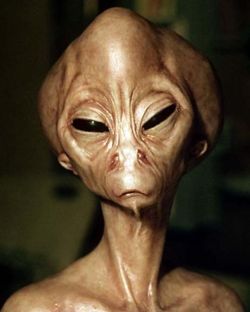
Thor
Norse God of Thunder
Asgard played by Michael Shanks (voice)
Episodes "Thor's Hammer"; "Thor's Chariot"; "Fair Game"; "Nemesis"; "Small Victories"; "Revelations"; "Descent"; "Prometheus"; "Unnatural Selection"; "Disclosure"; "Fragile Balance"; "Lost City, Part 1"; "New Order, Part 1 and 2" and "Ripple Effect"
God of thunder in Germanic mythology and Germanic paganism, and its subsets: Norse paganism, Anglo-Saxon paganism and Continental Germanic paganism. The god is also recorded in Old English as Ãunor, Old Saxon as Thunaer, as Old Dutch and Old High German: Donar, all of which are names deriving from the reconstructed Proto-Germanic name *Ãunraz.
Most surviving stories relating to Germanic mythology either a mention Thor or center on Thor's exploits. Thor was a much revered god of the ancient Germanic peoples from at least the earliest surviving written accounts of the indigenous Germanic tribes to over a thousand years later in the late Viking Age.
Thor was appealed to for protection on numerous objects found from various Germanic tribes. Miniature replicas of Mjolnir, the weapon of Thor, became a defiant symbol of Norse paganism during the Christianization of Scandinavia.

Thoth
Egyptian god of wisdom and scribes.
Goa'uld engineer/Scientist working for Anubis played by Ian Marsh. Killed by Carter in "Evolution Part 2".
Episodes: "Evolution Part 2"
Thoth was considered one of the most important deities of the Egyptian pantheon, often depicted with the head of an Ibis. His feminine counterpart was Seshat. His chief shrine was at Khemennu, where he led the local pantheon, later renamed Hermopolis by the Greeks (in reference to him through the Greeks' interpretation that he was the same as Hermes) and Eshmûnên in Coptic. He also had shrines in Abydos, Hesert, Urit, Per-Ab, Rekhui, Ta-ur, Sep, Hat, Pselket, Talmsis, Antcha-Mutet, Bah, Amen-heri-ab, and Ta-kens.
He was considered the heart and tongue of Ra as well as the means by which Ra's will was translated into speech. He has also been likened to the Logos of Plato and the mind of God. (see The All) In the Egyptian mythology, he has played many vital and prominent roles, including being one of the two deities (the other being Ma'at) who stood on either side of Ra's boat. He has further been involved in arbitration, magic, writing, science, and the judging of the dead.

Yu - Huang Shang Ti
Chinese god of Heaven and Earth
Goa'uld played by Vince Crestejo Enemy of Anubis. So old he has become senile. Killed in "Reckoning".
Episodes: "Fair Game", "Summit", "Last Stand", "The Warrior", "Full Circle", "Fallen", New Order: Part 1", "New Order: Part 2", "Reckoning: Part 1"
The Jade Emperor, is the Taoist ruler of Heaven and all realms of existence below including that of Man and Hell according to a version of Taoist mythology. He is one of the most important gods of the Chinese traditional religion pantheon.
The Jade Emperor is known by many names including Heavenly Grandfather which is used by commoners, the Pure August Jade Emperor, August Personage of Jade the Xuanling High Sovereign, and his rarely used formal title, Peace Absolving, Central August Spirit Exalted, Ancient Buddha, Most Pious and Honorable, His Highness the Jade-Emperor, Xuanling High Sovereign.
Origin
It was said that the Jade Emperor was originally the crown prince of the kingdom of Pure Felicity and Majestic Heavenly Lights and Ornaments. At birth he emitted a wondrous light that filled the entire kingdom. When he was young, he was kind, intelligent and wise. He devoted his entire childhood to helping the needy (the poor and suffering, the deserted and single, the hungry and disabled). Furthermore, he showed respect and benevolence to both men and creatures. After his father died, he ascended the throne. He made sure that everyone in his kingdom found peace and contentment. After that, he told his ministers that he wished to cultivate Tao on the Bright and Fragrant Cliff. After 1,550 kalpas, each kalpa lasting for 129,600 years, he attained Golden Immortality. After another one hundred million years of cultivation, he finally became the Jade Emperor. (Using the given figures, this period before his becoming the Jade Emperor lasted for a total of about 200,880,000 years.)
Vanquishing evil
There is a little known myth which tells of how the Jade Emperor became the monarch of all the deities in heaven. It is one of the few myths in which the Jade Emperor really shows his might.
In the beginning of time, the earth was a very difficult place to live; a much harsher place to live in than it is now. Men were having tremendous difficulty coping with existence; not only did men have to deal with harsh conditions, but also with all kinds of monstrous beings. At this time, there were also not many gods or deities to protect men. Furthermore, a lot of powerful, evil demons were defying the immortals of heaven. The Jade Emperor was still at the time an ordinary immortal who roamed earth to help as many people as he could. He was, however, saddened by the fact that his powers were limited and could only ease the sufferings of men. He decided to retreat in a mountain cave and cultivate his Dao. He passed 3,200 trials, each trial lasted for about 3 million years.
Unfortunately, a powerful, evil entity-- a demon of sorts, which dwelt on earth-- had the ambition to conquer the immortals and gods in heaven and proclaim sovereignty over the entire universe. It went into retreat later than the Jade Emperor. This evil entity retreated itself too and went into meditation to expand its power. He passed through 3,000 trials each trial lasting for about 3 million years too. After it passed its final trial, it felt confident that no one could defeat it anymore. It re-entered the world again, and recruited an army of demons with the purpose of attacking heaven.
The immortals being aware of the threat gathered themselves and prepared for war. The gods were unable to stop the powerful demon and all were defeated by it. The Three Pure Ones were leading the celestial beings at the time.
Fortunately, the Jade Emperor finished his cultivation in the midst of this war. He was changing the land to make it more liveable for men and repelling all kinds of monstrous beasts. Suddenly, he saw an evil glow emitting from heaven and knew something was amiss. He ascended and saw that a war was going on, he saw that the demon was too powerful to be stopped by any of the gods present. He went up and challenged the demon, and a battle ensued between them. Mountains shook and rivers and seas toppled; however, the Jade Emperor stood victorious due to his deeper and wiser cultivation, not for might but for benevolence. After defeating the demon, all the other demons were scattered by the gods and immortals.
Because of his noble and benevolent deeds, the gods, immortals and mankind proclaimed the Jade Emperor the supreme sovereign of all.
Creation
The world started with wuji (nothingness) according to the Chinese creation myth, Jade Emperor was the head of the pantheon but not responsible to the creation process itself.
According to another version of creation myth, the Jade Emperor fashioned the first humans from clay, but as he left them to harden in the sun, it rained, misshaping some of the figures, thus explaining the origin of sickness and physical abnormalities(The most common alternative Chinese creation myth states that human beings were once fleas on the body of Pangu.)
The story above is also told as Nüwa who fashions humans out of the mud from the Yellow River by hand. Those she made herself became the richer people of the earth. After getting lazy she used a rope and swung it around. The drops that fell from the rope became the poorer humans.
The princess and the cowherd
In another story, popular throughout Asia and with many differing versions, the Jade Emperor has a daughter named Chih'nü. She is most often represented as responsible for weaving colorful clouds in the heaven, in some versions she is instead a seamstress who works for the Jade Emperor. Everyday Chih'nü descended to earth with the aid of a magical robe to bathe. One day, a lowly cowherd named Niu Lang spotted Chih'nü as she bathed in a stream. Niu Lang fell instantly in love with her and stole her magic robe which she had left on the bank of the stream, leaving her unable to escape back to Heaven. When Chih'nü emerged from the water, Niu Lang grabbed her and carried her back to his home.
When the Jade Emperor heard of this matter, he was furious but unable to intercede, since in the meantime his daughter had fallen in love and married the cowherd. As time passed, Chih'nü grew homesick and began to miss her father. One day, she came across a box containing her magic robe which her husband had hidden. She decided to visit her father back in Heaven, but once she returned, the Jade Emperor summoned a river to flow across the sky (the Milky Way), which Chih'nü was unable to cross to return to her husband. The Emperor took pity on the young lovers, and so once a year on the seventh day of the seventh month of the lunar calendar, he allows them to meet on a bridge over the river.
The story refers to constellations in the night sky. Chih'nü is the star Vega in the constellation of Lyra east of the Milky Way, and Niu Lang is the star Altair in the constellation of Aquila west of the Milky Way. Under the first quarter moon (7th day) of the seventh lunar month (around August), the lighting condition in the sky causes the Milky Way to appear dimmer, hence the story that the two lovers are no longer separated in that one particular day each year.
The seventh day of the seventh month of the lunar calendar is a holiday in China called Qi Xi, which is a day for young lovers much like Valentine's Day in the West; in Japan, it is called Tanabata (star day), and in Korea, it is called Chilseok. If it rains on that day, it is said to be Chih'nü crying tears at being reunited with her husband.
The zodiac
There are several stories as to how the twelve animals of the Chinese zodiac were chosen. In one, the Jade Emperor, although having ruled Heaven and Earth justly and wisely for many years, had never had the time to actually visit the Earth personally. He grew curious as to what the creatures looked like. Thus, he asked all the animals to visit him in heaven. The cat, being the most handsome of all animals, asked his friend the rat to wake him on the day they were to go to Heaven so he wouldn't oversleep. The rat, however, was worried that he would seem ugly compared to the cat, so he didn't wake the cat. Consequently, the cat missed the meeting with the Jade Emperor and was replaced by the pig. The Jade Emperor was delighted with the animals and so decided to divide the years up amongst them. When the cat learned of what had happened, he was furious with the rat and that, according to the story, is why cats and rats are enemies to this day.
His predecessor and successor
The Jade Emperor was originally the assistant of the Divine Master of the Heavenly Origin, Yuan-shi tian-zun. Yuan-shi tian-zun is said to be the supreme beginning, the limitless and eternal creator of Heaven and Earth, who picked Yu-huang, or the Jade Emperor, as his personal successor. The Jade Emperor will eventually be succeeded by the Heavenly Master of the Dawn of Jade of the Golden Door. The characters for both are stamped on the front of the arms of his throne.
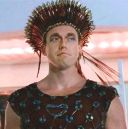
Zipacna
Mayan god of the mountains,
Goa'uld played by Kevin Durand. Serves Apophis then Klorel and finally Anubis.
Episodes: "Pretnse", "Summit", "Last Stand"
In Maya mythology, Zipacna was a son of Vucub Caquix (Seven Macaw) and Chimalmat. He and his brother, Cabrakan (Earthquake), were often considered demons. Zipacna, like his relatives, was said to be very arrogant and violent. Zipacna was characterized as a large caiman and often boasted to be the creator of the mountains.
The Popol Vuh tells the story that one day Zipacna was basking on the beach when he was disturbed by the Four Hundred Boys (possibly patron deities of alcohol), who were attempting to construct a hut. They had felled a large tree to use as the central supporting log, but were unable to lift it. Zipacna, being immensely strong, offered to carry the log for them, which he did. Although most translations of the Popol Vuh would seem to indicate this was done as a gesture of goodwill, it is generally agreed that Zipacna did so in a spirit of arrogance, mocking the boys for their inability to do so.
The Four Hundred Boys decided it was not good that one man had such strength, and that Zipacna should be killed. They attempted to deceive Zipacna by asking him to dig a hole for their post, intending to thrust the massive column into the hole and kill him. Zipacna realized their deceit, however, and saved himself by surreptitiously digging a side tunnel and hiding inside it when the boys dropped the post in the hole. To complete the illusion of his death, Zipacna cried out in pain, and later allowed ants to carry bits of his hair and trimmings from his nails out of the hole, satisfying the boys that he had been killed.
On the third day after their apparent success, the Four Hundred Boys finished the construction of their hut and celebrated both its completion and Zipacna's death by preparing wine and engaging in a drunken revelry. Zipacna emerged from his hole after the boys had passed out, and with his massive strength he felled the column and caused the house to crash down upon the sleeping boys, killing the lot without a single survivor. After their death, the boys entered into the heavens as the open cluster known as the Pleiades.
Hunahpu and Ixbalanque, the two divine Hero Twins, decided to exact revenge upon Zipacna for the death of the Four Hundred Boys; they also did so in a continuation of their quest to bring down the arrogant gods. The pair devised a scheme in which an elaborate fake crab was constructed and hid it deep in a canyon. They then sought out Zipacna along the beach, where he was hunting for his usual favourite food, crabs. Zipacna was very hungry and had been unable to locate any crabs for his meal, and the pair informed him they had spotted a very large crab for the taking. They guided Zipacna to their trap, and being overcome with hunger, he was unable to see through the trick. Zipacna went in for the crab, and by means not specified by the Popol Vuh, a mountain was made to collapse or fall over on top of him, either killing him or turning him into stone.
The account of Zipacna "entering" in search of the crab (which is specified to be a female), in particular his going in "on his back" on the second try, seems to be a parody of sexual intercourse. Indeed, it has been suggested by some interpretations of the Popol Vuh that it was Zipacna's lust and sexual appetite, not his hunger, that drove him to his doom.
Did I miss any? Post comments or suggestions here.



![Ten Mayan gods: Ten original etchings interpreting symbols representing some of the principal Mayan dieties [sic] as found in the ancient Mayan codices](https://m.media-amazon.com/images/I/01RmK+J4pJL._SL500_.gif)



